














































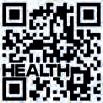
08 Autism Spectrum Disorder: A story of Inclusion and Hope
16 Women’s Eye Health Awareness: Top five eye ailments in women and how to manage it?
34 Phytotherapy : All about the revival of an ancient system of seeking sustainable panaceas through plantbased medicine
14 May 12: World Nursing Day, tribute to our Florence Nightingales

20 Gynetics: Project de-extinction, a new frontier in reproductive medicine
28 Telemedicine: Bringing the world closer, one network at a time 26 Invitro Diagnostics: Fuji Film has mastered the art of innovation and AI to present cutting edge diagnostic tools for rapid health assessment
32 Diets that work- low calorie regimen to burn stored fat
22 Are you getting quality Sleep? For restful sleep choose the right mattress
42 The Art of Stillness: Pause, relax, unwind with meditation and breathwork
18 The five Cs of Parenting: Collaboration, Camaraderie, Consistency, Compassion, Celebration
30 All about HIIT: High Intensity Interval Training and its wonderful impact on physical fitness
44 Recipes: Healthy breakfast ideas 50 Dining Out

01 Events
01 Ask the Experts 01 News Round-up

Publisher
Dr. Thumbay Moideen
Founder President, Thumbay Group
Editorial & Design Advisor Nousheen Salma
Editor Suchitra Bajpai Chaudhary
COO Thumbay Media Vignesh S. Unadkat
Design Consultant Nazlah Salam
Head - Sales & Marketing Anindita Shetty
Editorial and International Co-ordination Thumbay Media , Thumbay Group
Art & Design Mudrikath Ammemar
Online Edition Shavaiz Arshad
Accounts Jahir Pasha
Photography Ranjith Ravi
Marketing Office: P.O. Box 415555, Dubai, UAE. Tel.: +971-4-2985555, Fax: +971-4-2989555,
HEALTH is published under the licence no. 183 by National Media Council
Send your letters to editor: editor@healthmagazine.ae
Advertising & Marketing: sales@healthmagazine.ae advertising@healthmagazine.ae Press: press@healthmagazine.ae
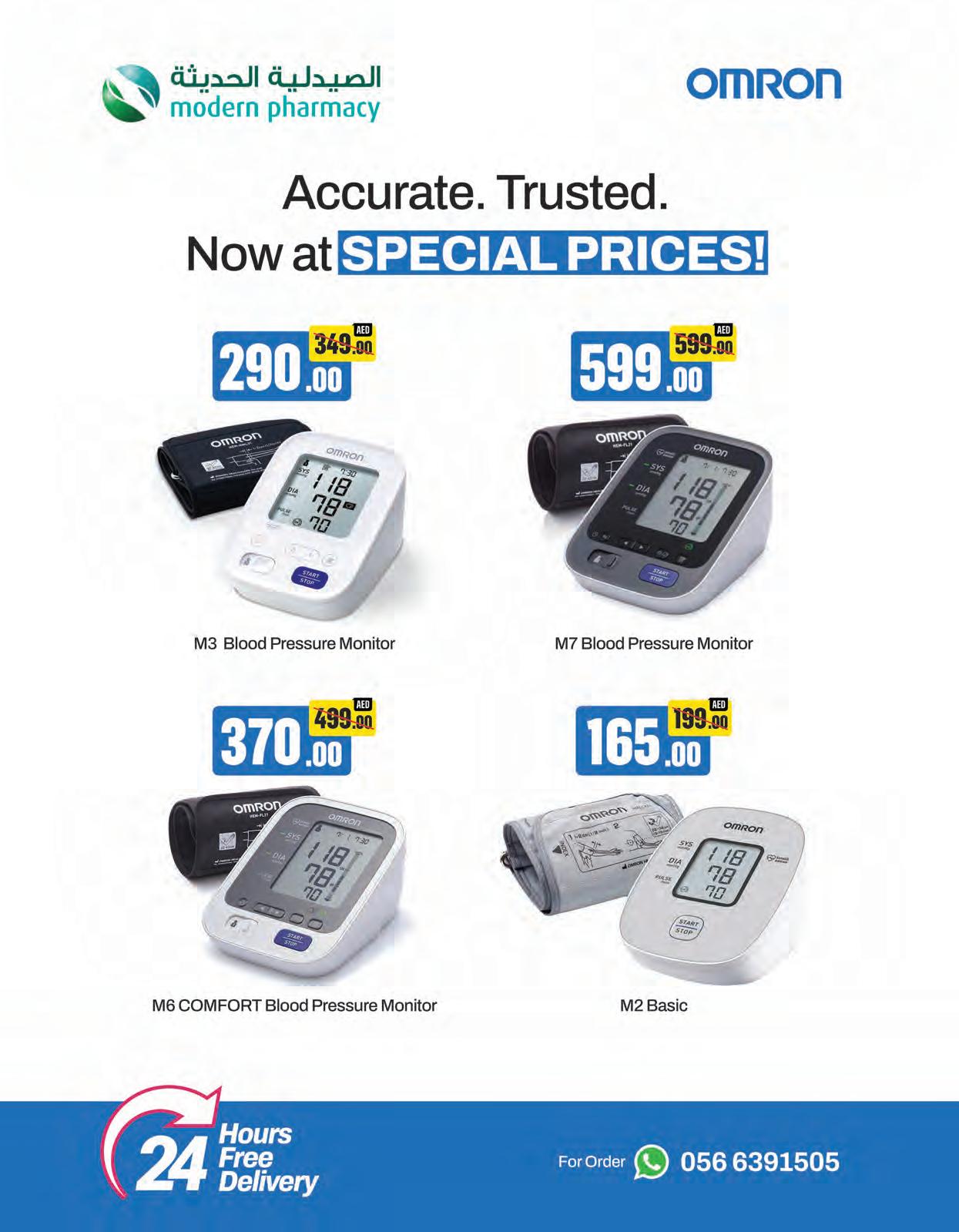
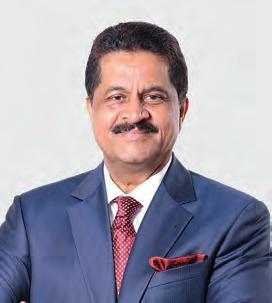
Dr. Thumbay Moideen Founder President - Thumbay Group
Dear Readers,
Warm greetings from Thumbay Group!
As we step into a vibrant summer season, I’m delighted to welcome you to the upcoming issue of Health Magazine – your trusted companion for wellness, inspiration, and innovation in healthcare. I invite you to explore the insights and initiatives that continue to shape our health-conscious world and help prepare for a healthy, happy summer ahead.
This year marks a special milestone as Thumbay Group proudly completes 27 remarkable years in the UAE. From our humble beginnings to becoming one of the region’s most diversified healthcare and education providers, our journey has been one of vision, commitment, and service to the community.
We recently had the privilege of sponsoring the spectacular Thumbay Fest in India, celebrating culture, community, and wellness with great enthusiasm and public participation. I was also honored to be featured among the ‘Changemakers of India’ by Outlook India, a recognition that reinforces our mission of impact-driven growth and innovation.
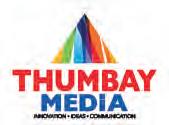
On the academic front, admissions are now open for all programs at Gulf Medical University, United Arab Emirates, including our newly launched programs at Thumbay Fergana College of Medical Sciences, Uzbekistan. These additions align with our vision to nurture global healthcare
leaders and meet the evolving needs of the medical world.
We also successfully concluded the Thumbay International Research Grant 2025, a flagship initiative supporting cutting-edge research in healthcare and medical sciences. It was heartening to see the enthusiasm of our faculty and students, and I am proud that this initiative continues to strengthen the research ecosystem across all our institutions.
I was also privileged to be invited as a speaker at the International Veterinary Conference in Moscow, where we further strengthened our academic network by signing an MOU with Don State Technical University in the field of Veterinary Medicine.
Meanwhile, Thumbay Labs continues to expand its diagnostic offerings, with several advanced new tests launched to support precision medicine and early diagnosis.
In hospitality, Thumbay Hospitality has made great strides, especially with its growing portfolio in outdoor catering services, delivering quality food and Service.
As we continue to expand with purpose and passion, I thank each of you for being part of this journey. May this summer bring good health, joyful memories, and renewed inspiration for all.
Stay healthy. Stay inspired. Wishing you happy times ahead!
"If you get tired, don’t quit, learn to rest."
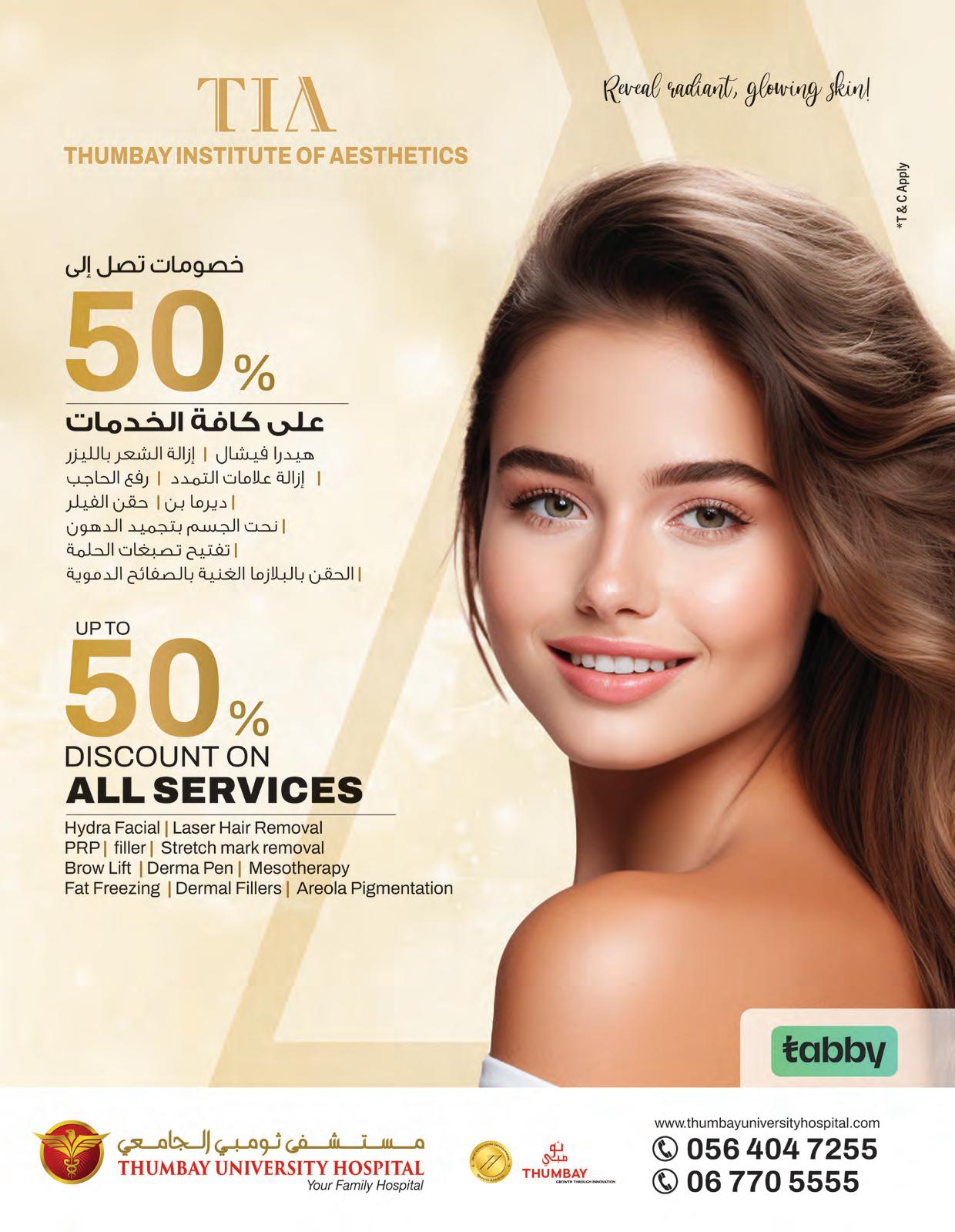
We are proud to introduce the Health Magazine Advisory Board, a distinguished panel of experts dedicated to advancing healthcare knowledge and practice. This esteemed group brings together renowned professionals from various medical fields, committed to providing insights and guidance to ensure our content meets the highest standards of accuracy and relevance. Their expertise will drive our mission to educate and inform our readers, contributing to better health outcomes and empowering individuals to make informed decisions about their well-being. With their support, our magazine will continue to be a trusted source of health information for the community.
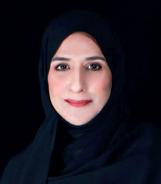
Dr. Nahla Kazim Consultant Reproductive and Medicine and Infertility Founder, CEO of Kazim's Fertility Barza.
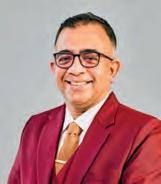
Dr. Bobby Jose Neuro Interventionist Medcare Royal Speciality Hospital, Medcare Hospital, Sharjah
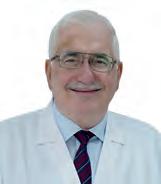

Dr. Rajiv Lochan Interventional Cardiologist Al Zahra Hospital, Dubai
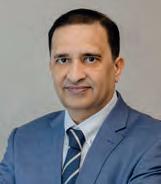
Dr. Sunjay Sureen Orthopedic Surgeon Prime Healthcare Group
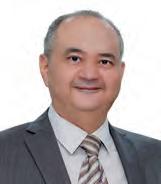
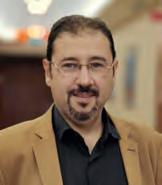
Dr. Adel Al Sisi Chief Medical Officer Prime Healthcare Group Consultant Intensivist Chair of ICU Department
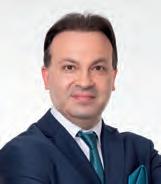
Dr. Mohannad Diab Consultant Medical Oncologist Director of Oncology and Haemotology, Mediclinic Hospital, Abu Dhabi
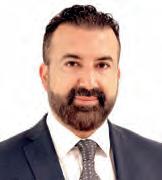
Dr. Rabii Madi Urology Consultant Cleveland Clinic, Abu Dhabi
Recognized globally as Autism Awareness Month, April is a time to celebrate the unique strengths and neurodiversity in children on the Autism Spectrum and accept the shared responsibility of the community towards acknowledging the importance of understanding, acceptance, and inclusion.

Uzma Karim, a Sharjah resident, has no inhibition in acknowledging that her son, Mohammad Huzaifa (6) has been diagnosed with mild to moderate autism, while her daughter Fatima Mohammad (4) requires therapy for attention deficit hyperactivity disorder (ADHD).
Speaking to HEALTH, this mother of two who is also a banker by profession said, “if I do not acknowledge that my children need therapy who will?” She realized there were gaps in communication in her son when he was three years old. “He would remain in his own world, not respond to his name, no communicate with us verbally and made no eye contact.” The child underwent screening and was eventually admitted to Austin Centre for Rehabilitation.
Let us acknowledge that more and more children are now differently abled or being diagnosed in this spectrum.
“I decided to admit Fatima too, to the center as she had some hyperactivity issues. I cannot tell you about the dramatic changes I have seen in my son ever since he underwent therapy. He now is able to make conversation, he responds to his name, makes eye contact, is extremely protective about his sister and me. He was given an award as the best dancer at the center, The team at Austin Centre is so dedicated, humble and patient and I feel both my children have come a long way,” said the relieved mother who has high hopes of introducing her kids to main-stream schools soon.
around the world, a time to reflect on a condition that touches the lives of an estimated one in 146 children in the UAE - Autism Spectrum Disorder. (ASD).
The National Institute of Mental Health, USA defines ASD as a complex neurodevelopmental condition characterized by challenges with social interaction, communication, and repetitive behaviors. However, to define autism solely by its challenges is to overlook the extraordinary talents and perspectives that many individuals on the spectrum bring to the world.
Dr. Ritu Gupta, Clinical Psychologist, Founder & Director of B-live.me, explains: “When we say autism is a spectrum, we mean there’s no single, ‘typical’ autistic experience. Some individuals may have significant challenges with communication, sensory processing, or social interactions, while others might excel in areas like analytical thinking, creativity, or deep focus.”
Early intervention, sometimes as early as one year, is recommended.
Parents are urged to monitor their child’s communication and hand-eye coordination early on. Mothers can detect the gaps early and can ask for ASD screening.
The American Psychology Association reiterates that early diagnosis is invaluable because it opens the door to understanding and support at a crucial developmental stage. The sooner a child’s unique needs are identified and interventions tailored to help him, the quicker it helps build up key skills like communication, emotional regulation, and social confidence.
One of the most effective tools for supporting children with autism is behavioral therapy, particularly Applied Behavior Analysis (ABA). ABA, when delivered in a childcentered, strength-based way, helps children develop confidence in navigating social situations explain, leading behavioral therapists. Other approaches, like DIR/Floor time, focus on emotional connections and relationship-driven learning, which are crucial for social development.
Some of the most effective therapies that have helped children on the spectrum maintain eye contact and have better motor co-ordination and cognitive development have been introduced by many centers and helped rehabilitate children.
April is a month of blooming flowers, springtime renewal, and for millions

One such center achieving successful results is the Austin Centre for Rehabilitation. With branches in Karama, Dubai, and Al Nahda, Sharjah, Austin Center has helped hundreds of children overcome challenges and achieve remarkable milestones.
Led by Asha Susan, an International Behavior Analyst with 18 years of experience, the center works with a multidisciplinary team ensuring that every child receives personalized interventions tailored to his or her unique needs.
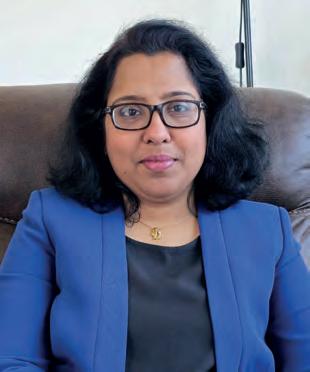
Asha Susan elaborates on the techniques and their unique approach. “At all branches of our center, we believe in early intervention to help children with determination reach their full potential. For over a decade, we have been a trusted name in the UAE, providing evidencebased therapies for children with autism and other developmental challenges. Parents come to us with hopes and expectations, and we are committed to delivering structured, proven strategies that foster meaningful progress.
Take the case of Ayaan, a two and half -year-old toddler who came to Austin Center with clear symptoms of being on the spectrum.
He displayed classical symptoms such as
Limited speech and difficulty expressing needs
Minimal eye contact and low social engagement
Difficulty interacting and playing with others
His parents were deeply concerned about his lack of verbal communication and social connection. After a comprehensive assessment, their team designed a structured therapy plan incorporating Applied Behavior Analysis (ABA), Speech Therapy, and Occupational Therapy to target his developmental needs. After eight months of consistent therapy, Ayaan made remarkable progress:
He started using single words and gradually was able to form short sentences. His eye contact and social engagement improved significantly. He showed better emotional regulation, reducing meltdowns. He learned to play with peers and follow simple instructions.
Ayaan’s rehabilitation indicates there is strong hope for these children once they get the right therapy. Today, Ayaan is preparing to join a nursery in Dubai, and his parents are thrilled with his transformation. His journey


highlights the power of early intervention and structured therapies in shaping a child’s future.
Asha Susan reiterates the importance of picking out Autism signs early on. “At the Austin Center, we emphasize the early identification of developmental delays. If you notice these signs before age two years, seeking professional support can make a significant difference. Asha provides a checklist for parents to use to recognize symptoms. These include.

Limited or no babbling by 12 months
No response to their name by 12 months
Lack of gestures (pointing, waving) by 12-14 months
Minimal eye contact or social smiling
Repetitive movements (handflapping, rocking, spinning objects)
Loss of previously acquired speech or social skills
Unusual sensitivity to sounds, lights, or textures
Research proves that early intervention leads to better communication, behavior, and learning outcomes. The earlier a child receives therapy, the greater their
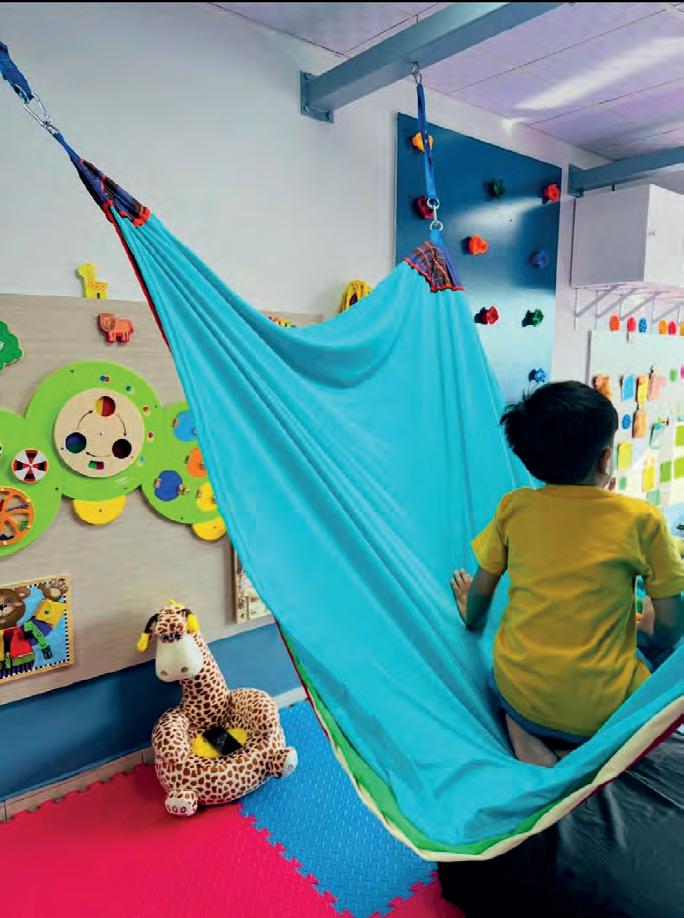
chances of developing essential skills for independence and social interaction.
If you recognize these signs in your child, don’t wait. Enroll your child at any of the Autism Centers closest to your home. Asha Susan adds, “At the Austin Center, with branches in Karama, Dubai, and Al Nahda, Sharjah, we have helped hundreds of children achieve progress through expert ABA Therapy, Speech Therapy, and Occupational Therapy. Start Young, Start Now, Because Every Child Deserves a Bright Future! For over a decade, Austin Center has been transforming lives
through structured, compassionate, and expert-driven therapies. Our multidisciplinary team ensures children receive the right intervention at the right time.If you have concerns about your child’s development, we’re here to help. Early intervention can change a child’s life—let’s start this journey together with Austin! “
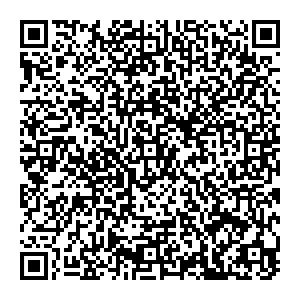
It is advised that children with mild autism must be included in mainstream schools after initial therapy and intervention for best integration. Inclusion is not just a policy; it is a fundamental right. Schools play a pivotal role in fostering inclusive environments that empower children with autism to thrive academically and socially.

Take the example of GEMS Education, inclusion is embedded in the school ethos. Nergish Khambatta, Senior Vice-President – Education at Gems Education elaborates.
“Inclusion isn’t just a policy; it’s part of our identity. We’ve built a multi-tiered support system that ensures students with additional needs feel valued, understood, and empowered to succeed.”
closely with teachers and families to develop Individualized Education Plans (IEPs) tailored to students’ unique needs. The emphasis is on fostering not just academic success but also social-emotional growth.
help refine teaching strategies. “We organize special sessions, awareness campaigns, and workshops to ensure continuity of support between school and home,” Nergish adds. Success is measured not just in grades, but in student progress, confidence, and their ability to transition to independent learning.
Each GEMS school has a dedicated inclusion team, which may include special edication needs (SEN) coordinators, speech and behavioral therapists, and learning support assistants. These professionals work
“In the lower grades, our classrooms are designed to be flexible,” Nergish explains. “Sensory-friendly spaces, quiet zones, and assistive technology help students with sensory sensitivities navigate their learning environment more comfortably. Peer buddy programs pair neurotypical students with their peers, fostering natural friendships and social integration.”
Many other champions of inclusion echo this sentiment. Inclusion goes far beyond physical placement in a mainstream classroom; it requires creating an environment where every child feels understood, respected, and a genuine part of the learning community.
“The success of our schools in inclusion is only as strong as the teachers,” continues Nergish emphasizing on the crucial role that teachers play. “That’s why training is at the core of everything we do.” Every staff member undergoes KHDA-certified professional development in inclusive education, equipping them with strategies for differentiation, classroom accommodations, and special needs support.
Beyond formal training, ongoing coaching and collaboration with experts from local organizations
Many clinical psychologists emphasize the importance of social inclusion as well. “Structured social opportunities, such as peer buddy programs or guided social lunch clubs, offer low-pressure spaces for students on the spectrum to build connections at their own pace.”
Khambatta takes pride in the milestones achieved by students with special needs: “We’ve had students with special needs graduate from the IB Diploma Programme, deliver TEDx speeches, get employed locally, and go on to do things that fill them with joy. That is a measure of success that doesn’t get its due!”
Of late, most nutritionists agree that there is growing evidence to indicate that a diet low on sugar and rich in pre and probiotics, can restore the balance in the gut which is key to supporting positive results along with the right therapies.
“For many children on the spectrum, food isn’t just about nutrition; it’s deeply intertwined with sensory sensitivities, digestive health, and emotional regulation,” says Matilda Barnes, a nutritionist working with children on the spectrum.

Important steps to tweak nutrition in children on ASD includes balancing blood sugar identifying food allergies, such as gluten and dairy addressing nutrient deficiencies ensuring an optimal intake of essential fats, most notably omega 3 fatty acids
Despite significant progress, challenges remain, particularly
in the transition from school to higher education and employment. Dubai has made significant strides in inclusive education, but there’s always more that can be done. One of the biggest areas for improvement is expanding access to specialist support. Not all schools have the resources to hire dedicated therapists or learning support assistants, and increased funding or subsidies would make these critical services more accessible, observes Nergish.
“Beyond K-12 education, postschool opportunities remain limited. More vocational training programs and university-level accommodations would ensure that students with additional needs have pathways beyond school. “Right now, the transition to adulthood can be challenging due to a lack of inclusive workplaces and higher education options,” she explains. Strengthening partnerships between schools, universities, and industries could bridge this gap.
As we mark Autism awareness month, it is crucial to remember that inclusion is not just the responsibility of schools, but of society. Communities must work towards creating sensoryfriendly public spaces, inclusive extracurricular programs, and accessible community events. True inclusion is not about making neurodivergent children adapt to a neurotypical world but about creating a world that welcomes diverse ways of thinking, communicating, and experiencing life.
We must realize that Autism is not a condition to be ‘fixed’ but a way of being that enriches society with its unique perspectives. By embracing neurodiversity and investing in the tools and resources needed to support children with autism, we can create a world where every child can shine. Inclusion is not just a goal; it is a responsibility we all share.


May 12 is officially the International Nursing Day observed around the globe as it is also the birth anniversary of Florence Nightingale. It is time to acknowledge these silent warriors who are the backbone of healthcare. They work round-the-clock, tirelessly and are easily the unsung heroes. From assisting in the mother and child ward, helping the birth of newborns, to being the right hand of doctors in complicated surgeries, to caring for the sick and terminally ill patients to being the oasis of relief in tending to mentally ill patients, and lending the healing touch in home health care whilst caring for geriatric and long-term care patients both male and female, go beyond the call of duty to form a human bond of love and care with their patients, nursing most back to health.
On this day, we celebrate their stupendous contribution to making health care humane and say thank you!
Total vision loss or blindness can be avoided with awareness, prevention and steps towards conservation of our precious sight, Dr Saeed M Khan, Ophthalmologist & Medical Director at Jumeirah Prime Medical Center, Dubai.
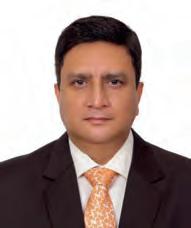
Dr Saeed M Khan
Ophthalmologist
& Medical Director at Jumeirah Prime Medical Center, Dubai.
Women, often tend to ignore telltale signs of deteriorating eyesight, prioritizing family health. USbased international organization Preventblindness.org has declared April the women’s eye health and safety month.
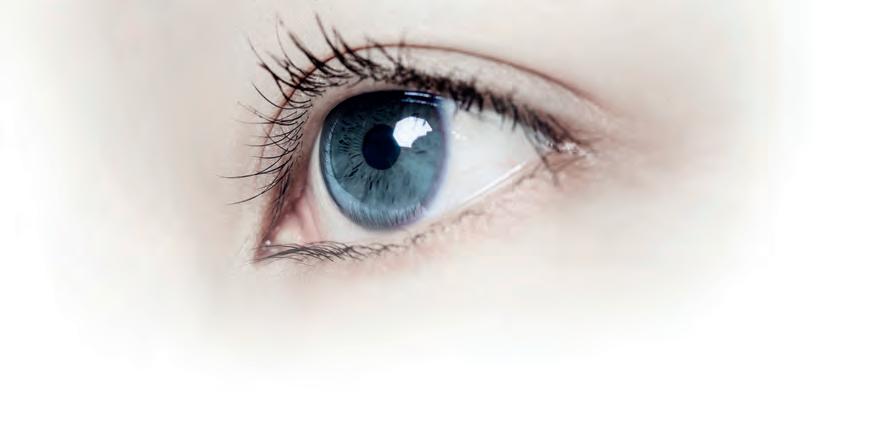
To help you navigate the common vision challenges, Dr Saeed, who is also the Medical Director of Prime Medical Center, Dubai, explores the top six eye ailments and recommends strategies to safeguard your sight.
As April marks the beginning of summer, it also shines spotlight on an often-overlooked aspect of our well-being - our eye health. With the spotlight shining on this often-overlooked issue, Eye Health Awareness Month serves as a timely reminder to prioritize vision care, with a particular focus on women’s eye health. Studies suggest that women are at a higher risk for certain eye diseases due to hormonal changes, longer life expectancy, and lifestyle factors. With increased exposure to heat, dust, and UV radiation in summer, maintaining optimal eye health becomes even more critical.
Glaucoma is a progressive eye condition that damages the optic nerve, often due to increased intraocular pressure. It develops gradually, often without noticeable symptoms until significant vision loss occurs.
Expert Advice: "Early detection through regular eye exams is crucial," says Dr. Saeed. Women over 40, particularly those with a family history of glaucoma, should schedule routine screenings. Treatments include prescription eye drops, laser therapy and in advanced cases, surgical interventions to manage eye pressure.
Many people assume Glaucoma is only an issue for the elderly, but it
can develop at any age. A healthy lifestyle with regular exercise, Yoga and a diet rich in leafy greens can help lower intraocular pressure naturally, adds Dr Saeed.
AMD affects the central vision and is a leading cause of blindness in older adults. This condition damages the macula, the part of the retina responsible for sharp, detailed central vision.
Expert advice: A diet rich in antioxidants, such as leafy greens, fish, and nuts, can help slow down AMD progression. Regular screenings, especially for women above 50, are crucial. Newer treatments, including anti-VEGF injections, have been successful in slowing vision loss. Smoking significantly increases the risk of AMD. Quitting smoking and wearing sunglasses with UV protection can reduce the risk of developing macular degeneration."
Cataracts cause the eye’s natural lens to become cloudy, leading to blurry vision, glare sensitivity, and difficulty with night vision. While cataracts are a normal part of aging, excessive sun exposure and smoking can accelerate their development resulting in premature cataract formations.
Expert Advice: Dr Saeed cautions, "Protecting the eyes from UV rays with sunglasses and hats can help delay cataract formation. Once cataracts interfere with daily life, Phacoemulsification with Intra ocular lens implantation is the most effective treatment, offering a high success rate with vision restoration, and it’s a day care procedure.
People often ignore early symptoms like increased light sensitivity and faded colors. Addressing these symptoms early and having a thorough eye exam can help in planning timely intervention.
Retinal detachment occurs when the retina pulls away from its underlying support tissue, leading to vision loss if untreated. Symptoms include sudden flashes of light, floaters, or a shadowlike curtain descending over the field of vision.
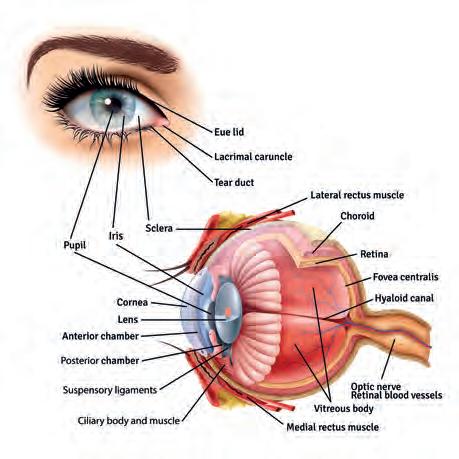
Expert advice: Dr. Saeed says Immediate medical attention is critical. Risk factors include Myopia, eye injuries, and previous cataract surgery. Treatment involves laser surgery, a vitrectomy or retinal surgery to repair the retina and prevent permanent vision loss.
Statistics indicate that people who engage in contact sports or have a history of severe nearsightedness should be especially cautious. Regular checkups can help identify weak spots in the retina before detachment occurs.
Diabetic retinopathy damages the blood vessels of the retina, leading to bleeding, swelling, and vision impairment. It is one of the leading causes of blindness in working-age adults, and women with diabetes are particularly at risk.
Expert advice: Strict blood sugar control and annual dilated eye exams are essential for prevention, emphasizes Dr Saeed, who attends to patients of retinopathy. Advanced cases may require laser treatment or injections to prevent further damage.
Patients with diabetes should also monitor their blood pressure and cholesterol levels. These factors play a significant role in preventing diabetic eye complications.
Women are at higher risk of developing dry eye syndrome, caused when the body doesn't make enough tears to lubricate the eye naturally. Tear production normally decreases as we age, so the condition is extremely common in women over age 55. Dry eyes are two to three times more common in women than in men at any age.
Expert advice: Dry eye is
one of the leading causes of visits to eye professionals.
There is no single cause of dry eye, and it seldom leads to blindness. But it can cause a lot of suffering and a diminished quality of life. When your eyes feel scratchy or sensitive to light, it's hard to read and drive, especially at night. Consult an Ophthalmologist H
As temperatures soar, summer presents additional challenges for eye health. Here’s how to keep your vision safe.
• Shield from UV Rays: Wear sunglasses with 100% UV protection to prevent Cataracts and Macular Degeneration.
• Stay Hydrated: Dehydration can cause dry eyes; drink plenty of water.
• Limit Digital Screen Time: Increased indoor activities often mean more screen time, leading to digital eye strain and dry eyes. Follow the 20-20-20 rule—every 20 minutes, look at something 20 feet away for at least 20 seconds.
• Protect Against Dust and Allergens: Use protective eyewear or wraparound sunglasses to shield your eyes from dust and pollen.
• Use Artificial Tears: Air conditioning can exacerbate dry eyes. Artificial tears help keep your eyes moist and comfortable. Consult your doctor and get a proper prescription for your eye health.
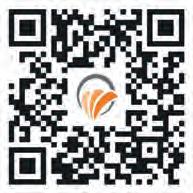

It was past midnight when Maya finally tiptoed into her 10-year-old son’s room, exhausted after a long workday. She found him awake, hunched over a school project that was due the next morning. "You could have asked me for help," she whispered, the guilt gnawing at her. "I didn’t want to disturb you," he replied, his voice a mix of disappointment and resignation. The moment hit her hard. She realized parenting wasn’t just about providing; it was about being present, involved, and intentional.
Raising children in today’s fast-paced world is both an art and a science, requiring a balance of love, discipline, and strategy.
In the words of New York’s best-selling author, Lisa Wingate, "Raising a child is like planting a seed and watching it grow into a beautiful flower."
Aptly resonates with what child psychologists say. They suggest that successful parenting can be distilled into five essential Cs: Collaboration, Camaraderie, Consistency, Compassion, and Celebration. These pillars serve as a roadmap to nurturing emotionally secure, independent, and welladjusted children.
Parenting is not a solo endeavor. It thrives on collaboration - not just between parents, but also with teachers, caregivers, and even the children themselves.
A study published in American Psychological Association (https:// www.apa.org/monitor/2017/09/ cover-resilience) found that children who see their parents working as a team tend to exhibit stronger emotional resilience and better problem-solving skills.
“Children learn cooperation by observing their parents,” say child psychologist. “When parents collaborate - whether in decisionmaking or setting household rules - they model essential skills like compromise, negotiation, and mutual respect.”
This also means involving children in discussions that affect them. Instead of dictating rules, inviting children to participate in conversations about family values fosters a sense of responsibility and belonging.
The modern world is rife with distractions: work pressures, social media, and the ever-present lure of screens. Yet, children crave deep connections with their parents. Research by the Harvard Center
on the Developing Child shows that children with strong emotional bonds with their parents develop higher self-esteem and better stressmanagement skills.
child’s evolving needs. However, maintaining clear and predictable boundaries, particularly in areas like discipline, fosters respect and accountability.
“Quality time isn’t just about proximity; it’s about genuine engagement,” point out parenting coaches advising many parents. “Even small rituals- like bedtime stories, weekly game nights, or cooking together - can strengthen camaraderie.”
Beyond structured time, it’s crucial to cultivate an environment where children feel heard. A simple “How was your day?” followed by active listening can reinforce a child’s sense of security and trust.
Anchor of
Children thrive on predictability. There are plenty of studies that have found that consistent routines and rules help children feel safe and reduce anxiety. Whether it’s bedtime schedules, disciplinary approaches, or behavioral expectations, consistency provides children with a reliable framework within which they can grow.
“Think of consistency like guardrails on a bridge,” explains developmental psychologists “When children know what to expect, they feel more secure and confident in navigating life’s challenges.”
This doesn’t mean rigidity; parents should remain adaptable to a
In a world that often measures success through achievement, it’s easy for parents to focus on outcomes - grades, trophies, or milestones - rather than emotions. But raising compassionate children starts with modeling compassion at home.
“Children develop empathy by experiencing it firsthand,” says child therapists on some school governing bodies “When parents respond to mistakes with understanding rather than anger, children learn to extend the same kindness to themselves and others.”
A study published in the Encyclopedia of Early Childhood Development (Anxiety and depression: Parent-child relationship | Encyclopedia on Early Childhood Development) found that children raised in emotionally supportive environments are less likely to develop anxiety and depression. Parental controls such as excessive regulation, overprotection, intrusiveness and low autonomy granting may undermine children’s sense of autonomy and safety and reinforce avoidant behaviors, increasing the risk of anxiety, the study says. A compassionate approach doesn’t mean avoiding discipline; rather, it involves correcting behavior with understanding rather than punishment.
Amid the pressures of modern parenting, it’s easy to focus on what’s lacking rather than what’s
thriving. However, celebrating small victories - whether it’s a toddler’s first steps, a teenager’s academic effort, or simply a kind gesture- builds confidence and motivation.
“Positive reinforcement shapes behavior more effectively than criticism,” note educational psychologists. “When children see their efforts recognized, they are more likely to develop intrinsic motivation and a growth mindset.”
Celebration need not be extravagant; a heartfelt “I’m proud of you” or a shared moment of joy can be profoundly impactful. Recognizing a child’s unique strengths fosters self-worth and resilience.
Maya, like many parents, realized that parenting isn’t about grand gestures; it’s about the small, consistent efforts that create a nurturing environment.
Parenting is not about perfection; it’s about presence. As the late self help expert and motivational speaker, Jesse Lair said, “Children are not things to be molded, but are people to be unfolded.”
These Five Cs help unfurl all the beautiful sentiments and values in a child when he is nurtured in a loving environment making her or him feel supported, valued, and understood.
The journey of parenting is challenging, but it can also be deeply rewarding. As the African proverb goes, “It takes a village to raise a child.” But more importantly, it takes intention, love, and all the Five Cs to raise a sorted-out child. H

Dr. Nahla Kazim
Consultant Reproductive and Medicine and Infertility Founder, CEO of Kazim's Fertility Barza.

The concept of de-extinction has captured the public imagination in recent years, with ambitious projects aiming to revive species like the woolly mammoth through advanced genetic technologies. The woolly mouse, a laboratory hybrid model with unique hair follicle characteristics, has also contributed to our understanding of developmental biology and genetic engineering techniques. These resurrection projects, while focused on wildlife conservation, have parallels in the field of reproductive medicine where scientists are working to
A bi-monthly column offering an informed insight into the latest cutting-edge advancements in gynecology and women’s health by experts in women’s reproductive health.
“resurrect” lost fertility and preserve reproductive potential for women facing medical challenges.
Just as researchers use CRISPR technology to edit elephant DNA with mammoth genes, reproductive specialists are exploring how gene editing can address infertility, genetic diseases, and fertility preservation in women. The same precision that might someday bring back the woolly mammoth could potentially repair or permanently eliminate genetic mutations that cause conditions like premature ovarian failure or hereditary reproductive cancers.
This intersection of de-extinction science and women’s health represents a fascinating frontier where technologies developed for one purpose may transform another field entirely. As we explore these scientific frontiers, we must consider how innovations intended for conservation might ultimately enhance human reproductive possibilities and address previously incurable conditions affecting women’s health.
Traditional gene-editing methods, such as Zinc Finger Nucleases (ZFNs) and TALENs, required scientists to engineer custom proteins for each DNA target—a
slow, expensive process. CRISPRCas9 revolutionized this field by acting as molecular “scissors” guided by RNA to precise genomic locations. This system is faster, cheaper, and more accurate, enabling edits in days rather than months.
1 Embryo Editing: CRISPR allows researchers to correct disease-causing mutations in embryos before implantation including the structural and the numerical chromosomal abnormalities such as Down’s Syndrome
2 Germline
: Editing sperm, eggs, or their precursor cells could eliminate hereditary disorders like cystic fibrosis or sickle cell anemia from future generations.
Inspired by biodiversity restoration efforts, CRISPR could theoretically recreate functional gametes from somatic cells, offering hope to individuals with no viable eggs or sperm. CRISPR also is being tested to repair genetic defects in eggs or ovarian tissue, offering hope for women with premature ovarian failure or age-related infertility.
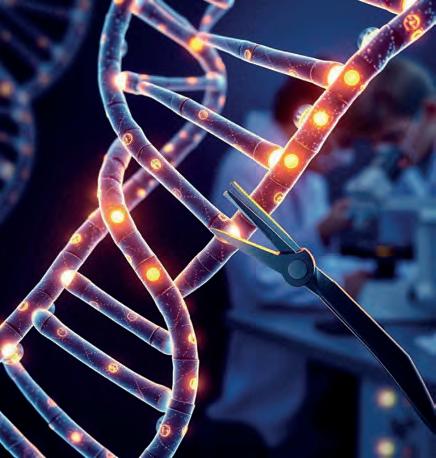
4
Endometriosis and PCOS: Gene editing could target hormonal pathways, offering new therapeutic options for these common reproductive disorders.
Off-Target Effects: CRISPR can inadvertently edit unintended parts of the genome, causing offtarget mutations that may lead to chromosomal rearrangements or impact other genes. These errors can compromise the safety and viability of edited embryos or gametes. These can lead to unforeseen health issues in individuals and their offspring, making safety a paramount concern before clinical application.
Incomplete Genome Reconstruction: CRISPR cannot create exact replicas of extinct species or traits; instead, it produces hybrids with partial restoration of genetic features, raising questions about the reliability and functionality of the edited genomes.
Intergenerational Impact: Germline genome editing alters DNA in a way that can be passed to future generations. While this could eliminate hereditary diseases, it
also risks transmitting harmful edits or creating irreversible changes in the human gene pool, raising concerns about longterm consequences and risks of developmental abnormalities.
Ethical Boundaries of Treatment vs. Enhancement: Genome editing for therapeutic purposes (e.g., curing infertility or genetic disorders) may be considered ethically acceptable than for the intentions of enhancement (e.g., selecting traits like intelligence, appearance or making Designer Babies). The potential misuse for non-medical indications could lead to societal inequality and a resurgence of eugenics, highlighting the need for robust biosecurity measures.
Societal and Cultural Implications: Genome editing challenges societal norms about “naturalness” and raises concerns about “playing God.” Public awareness is essential to build consensus on acceptable uses of advanced health innovations, empowering them with balanced knowledge while maintaining diverse cultural values.
Regulatory Landscape: The lack of uniform international regulations on genome editing creates risks of unethical practices in jurisdictions with lenient oversight. Globally, 70 countries ban heritable genome editing (changes passed to offspring), while 11 permit limited research. In the UAE, the regulatory environment is evolving to support innovative therapies while prioritizing safety and ethics. Initiatives under governmentbacked programs aim to integrate cutting-edge technologies into healthcare frameworks responsibly. Since January 2025, mandatory premarital genetic testing screens Emirati couples for 840 genetic conditions,
empowering informed family building options. The UAE’s National Genome Strategy aims to build a genetic database to guide personalized treatments and preventive care. Department of Health regulates CRISPRbased therapies like CASGEVY under its robust gene-editing framework, aligning with global safety standards while advancing treatments for blood disorders and other innovative therapies.

CRISPR’s potential in reproductive medicine is vast, from eradicating inherited disorders to extending fertility windows or restoring lost fertility. Yet, as de-extinction projects remind us, tampering with genetics demands humility and robust measures to combat unintended consequences. For the UAE and the world, the path forward lies in rigorous oversight, public dialogue, and prioritizing safety over speed.
As the woolly mice and mammoth ambitions continue to unfold, let’s ensure these projects empower—not endanger future generations.
Disclaimer: The information provided here is intended to provoke thought for potential future applications and does not promote off-label use of medical technologies. Always consult a doctor for any health concerns.

Sleep deprivation can trigger a variety of health issues ranging from neurological deficit to weight gain point out experts. For restful sleep and good spine health, choose the right mattress, say experts
At first, Ayesha M * dismissed her fatigue as a side effect of a busy life. A high-flying marketing executive, she struggled with frequent headaches, an inability to concentrate while at work, and severe fatigue. However, when she started gaining weight despite eating clean, she sought medical advice. The diagnosis! Severe sleep deprivation, exacerbated by an old, unsupportive mattress that disrupted her sleep cycles.
Are you a poor sleeper?
Ayesha’s case isn’t unique. Millions suffer from the consequences of poor sleep, often unaware that their mattress could be a silent culprit. Experts have long emphasized that quality sleep is not a luxury; it’s a biological necessity. “From cognitive function to heart health, immune response to weight management, restful sleep plays a fundamental role in overall well-being,” says Dr Hassan Hariri, Head of the Sleep Clinic at Rashid Hospital. And at

“Sleep is not just about feeling refreshed the next morning; it’s a crucial pillar of health,” explains Dr Hariri. “When sleep quality is compromised, so is nearly every function in the body. Chronic sleep deprivation increases cortisol levels, leading to weight gain, metabolic issues, and even cardiovascular diseases.”
the core of a good night’s sleep is the surface we rest on: our mattress.
A growing body of research underscores the profound impact of sleep on our health. Sleep is when our body undergoes essential restorative processes: the brain consolidates memories,
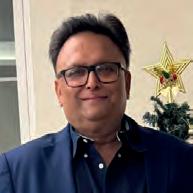
Vivek Handa, the Managing Director of Total Comfort, a leading mattress brand in the UAE, highlights the role of mattress technology in promoting restful sleep. “The type of springs, foam density, and layering in a mattress can make all the difference,” he explains. “Pocket spring mattresses, for example, provide targeted support by adapting to body contours, reducing pressure points. Memory foam mattresses excel in support, while hybrid options combine the best of both worlds.
“A well-constructed mattress is key to sound spine support. The springs are configured in a way along with the cushion to align to the spine naturally, preventing back pain and improving circulation. Poor spinal alignment during sleep can lead to chronic pain and even long-term posture issues. Choosing a mattress with high-quality materials ensures longevity, support, and ultimately, better health,” elaborates Vivek, who manufactures mattresses based on years of research on these aspects
the muscles repair themselves, and our hormones regulate everything from appetite to stress. The connection between sleep and neurological function is particularly striking. Poor sleep weakens cognitive abilities, impairing memory, focus, and decision-making. It also raises the
and has different varieties to cater to specific needs of people.
Studies show that people who consistently sleep fewer than six hours a night have a higher risk of hypertension and heart disease. “The body needs deep sleep to regulate blood pressure and heart rate,” explains Dr Hariri. “When sleep is disrupted, whether by stress, sleep apnea, or an uncomfortable mattress, the nervous system remains overactive, leading to sustained high blood pressure.”
Many cases of sleep deprivation, however, can be traced back to lifestyle choices including the mattress we sleep on. “Choosing the right mattress is an investment in long-term health,” reiterate Vivek
risk of neurodegenerative disorders like Alzheimer’s disease. According to Dr Hariri, “Even one night of inadequate sleep can affect mental clarity and emotional regulation. Long-term sleep deprivation is like putting your brain through chronic stress”.
“A good mattress supports spinal alignment, alleviates pressure points, and allows for undisturbed sleep cycles,” he continues.
Vivek emphasizes the importance of replacing mattresses regularly. “Even the best mattresses wear out over time. An old, sagging mattress can be detrimental to sleep quality and spinal health and one should replace them every seven to ten years to maintain proper spine support.”
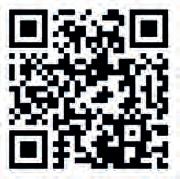

Beyond cognitive function, sleep has a profound impact on our musculoskeletal system. Orthopedic specialist Dr Prashant Pradeep Agarkar, Specialist Orthopedic & Trauma Surgery, Aster Orthopedic & Physiotherapy Specialty Clinic, Al Warqa emphasizes that the right mattress is critical for spinal alignment. An unsupportive mattress can lead to back pain, poor posture, and even exacerbate conditions like sciatica.
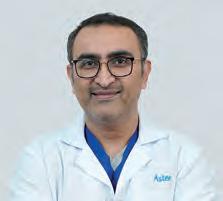
Dr Prashant Pradeep Agarkar, Specialist Orthopedic & Trauma Surgery
“A mattress that fails to support the natural shape of the spine forces the body into uncomfortable positions throughout the night. This not only leads to stiffness and pain but also prevents deep, restorative sleep,” explains Dr Prashant. He also adds that poor posture results in snoring and breathing difficulties affecting oxygen intake resulting in migraines and an increased risk of heart disease.
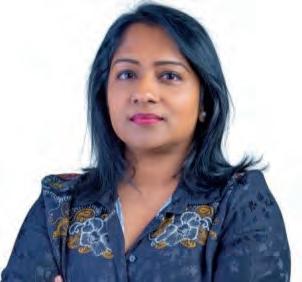
Lovely Ranganathan, Nutrition Educator and Founder - Good Food Guru, and wellness advocate,
adds, “People often underestimate the role of their mattress in overall health. Sleep affects everything from cognitive function to hormone regulation. Poor sleep increases cortisol, the stress hormone. It also disrupts hunger hormones raising ghrelin (which increases appetite) and lowering leptin (which signals fullness), leading to overeating and weight gain,” she explains.
“For those who work out, deep sleep is essential, as it’s when growth hormone is released for muscle repair. Less sleep means slower recovery and fatigued
muscles. Additionally, poor sleep reduces insulin sensitivity, making blood sugar regulation harder and increasing the risk of type 2 diabetes,” she says.

Dr Hassan Hariri Head of the Sleep Clinic Rashid Hospital.
• Invest in a good mattress and pillow to enhance comfort and prevent sleep disruptions.
• Block out light with blackout curtains for an optimal sleep environment.
• Limit screen time an hour before bed to avoid blue light exposure and melatonin suppression.
• Stick to a consistent sleep schedule: going to bed and waking up at the same time helps regulate circadian rhythms.
• Always test a mattress before you buy it, and invest in quality, not just for comfort, but for long-term health benefits. H


Colon cancer is a critical health concern in the MENA region. In the UAE, it is the leading cancer among Emirati men and the third most common among women. Each year, about 200 new cases are reported nationwide, yet it remains a top cause of cancer-related deaths. Tragically, the disease develops silently, and by the time symptoms like bleeding or pain appear, more aggressive treatment may be required. One survey revealed that 63 per cent of participants saw no need for screening as they felt healthy; however, approximately two-thirds of colorectal cancer cases in the UAE are detected at later stages, making treatment outcomes less favourable. Nonetheless, when discovered early, colon cancer can have cure rates of up to 90 per cent.
To enhance early detection, the UAE’s medical community is embracing sophisticated AI-enabled endoscopy systems analyse real-time video during a colonoscopy, highlighting polyps or lesions that might otherwise be overlooked. Multiple hospitals and healthcare facilities have installed AI modules that have boosted polyp detection, helping reduce mortality rates through earlier diagnoses.

At the forefront of these innovations is Fujifilm, a global leader in healthcare solutions. The company’s AIpowered CAD EYE system uses deep learning algorithms to detect and characterize polyps in real time. Furthermore, it has also introduced SCALE EYE, a measurement function designed to support endoscopists in estimating lesion sizes in the colon. By integrating advanced imaging and analytics, CAD EYE and SCALE EYE minimize the risk of missing potentially dangerous growths, thereby strengthening early detection and prevention efforts.

Michio Kondo MD of FujiFilm Middle East and Africa
cutting-edge tools like CAD EYE. This collaborative approach aligns seamlessly with the UAE’s broader healthcare strategies, including the “We the UAE 2031” vision that emphasizes preventive care and early detection.”
Innovation in the Region
Commenting on the new technology, Michio Kondo, MD of FujiFilm Middle East and Africa told HEALTH, “Our innovative endoscopy solutions underscore Fujifilm’s mission to provide bestin-class healthcare technologies to the UAE and beyond. The company’s UAE Technology Centre, established in 2020, serves as a hub for HCPs to gain hands-on experience with
Fujifilm is not new to the Middle East’s healthcare landscape. Over the past decade, the company has cultivated strong partnerships with both public and private hospitals, delivering a range of imaging technologies beyond endoscopy, from digital radiography to ultrasound. By working closely with local clinicians and administrators, Fujifilm tailors its solutions to address the specific needs of UAE patients and healthcare providers. This adaptability has accelerated the acceptance of
advanced diagnostics, helping position the UAE as a regional leader in medical innovation.
Beyond its AI-driven endoscopy systems, Fujifilm holds specialized imaging solutions and nextgeneration endoscopes. By refining visualization technologies, doctors can identify subtle tissue irregularities sooner, increasing the likelihood of effective treatment. The company’s ongoing research and development also offers promise for streamlining procedures, helping reduce patient discomfort while maintaining top-quality diagnostics.
With a wide-ranging portfolio that ranges from medical imaging to minimally invasive surgery, Fujifilm is not just keeping pace with the future of medicine, it is helping define it. The company’s cloud-based, AI-enabled Synapse® Enterprise Imaging system breaks down silos in patient care by giving clinicians streamlined access to
comprehensive imaging data across departments. Meanwhile, the AI platform, REiLI®, brings together decades of imaging expertise with forward-looking technology, aiming to boost diagnostic confidence while easing the burden on overworked medical professionals. From advanced MRI and ultrasound systems to cutting-edge in-vitro diagnostics for liver surveillance and lab testing, Fujifilm’s commitment to pushing the boundaries of what is possible is reshaping how we detect, diagnose, and treat diseases.

recently introduced a non-invasive “liquid biopsy” blood test that detects signs of colon cancer without relying on stool samples or invasive procedures. While offering a simpler path to detection, any risk flagged by this test requires a follow-up colonoscopy for confirmation and possible polyp removal.
Screening is the most effective way to prevent colorectal cancer and improve survival. In the UAE, health authorities recommend beginning screening at age 40, earlier than in many Western countries, due to a younger average onset. For average-risk individuals over 40, many physicians advise a colonoscopy every ten years or an annual faecal immunochemical test (FIT).

A colonoscopy is considered the gold standard for detection, allowing doctors not only to identify but also remove precancerous polyps in a single session. As physicians explain, removing these growths before they turn cancerous significantly reduces the likelihood of later-stage disease. Yet a study shows only 9% of adults over 40 in the UAE follow recommended screenings, often due to fear of discomfort or cultural stigma.
To encourage participation, UAE health leaders are rolling out more patient-friendly options. In Abu Dhabi, for instance, officials
Looking ahead, the UAE’s colon cancer strategy centres on increasing screening rates and leveraging AI to catch more earlystage tumours. Higher public awareness and state-of-the-art diagnostic tools can substantially lower mortality from the disease. For patients, the message is clear: colon cancer is often preventable through timely screenings and removing polyps before they turn malignant. For HCPs, AI-assisted endoscopy means fewer suspicious lesions go undetected.
Thanks to robust government backing and companies like Fujifilm Healthcare Solutions championing new technologies, the UAE is on the right track to significantly reduce colon cancer risks. As more residents embrace regular screenings and medical professionals adopt AIenhanced endoscopy, fewer families will face late-stage diagnoses. Indeed, a future shaped by proactive, lifesaving interventions and advanced care is within reach for communities across the Emirates. H
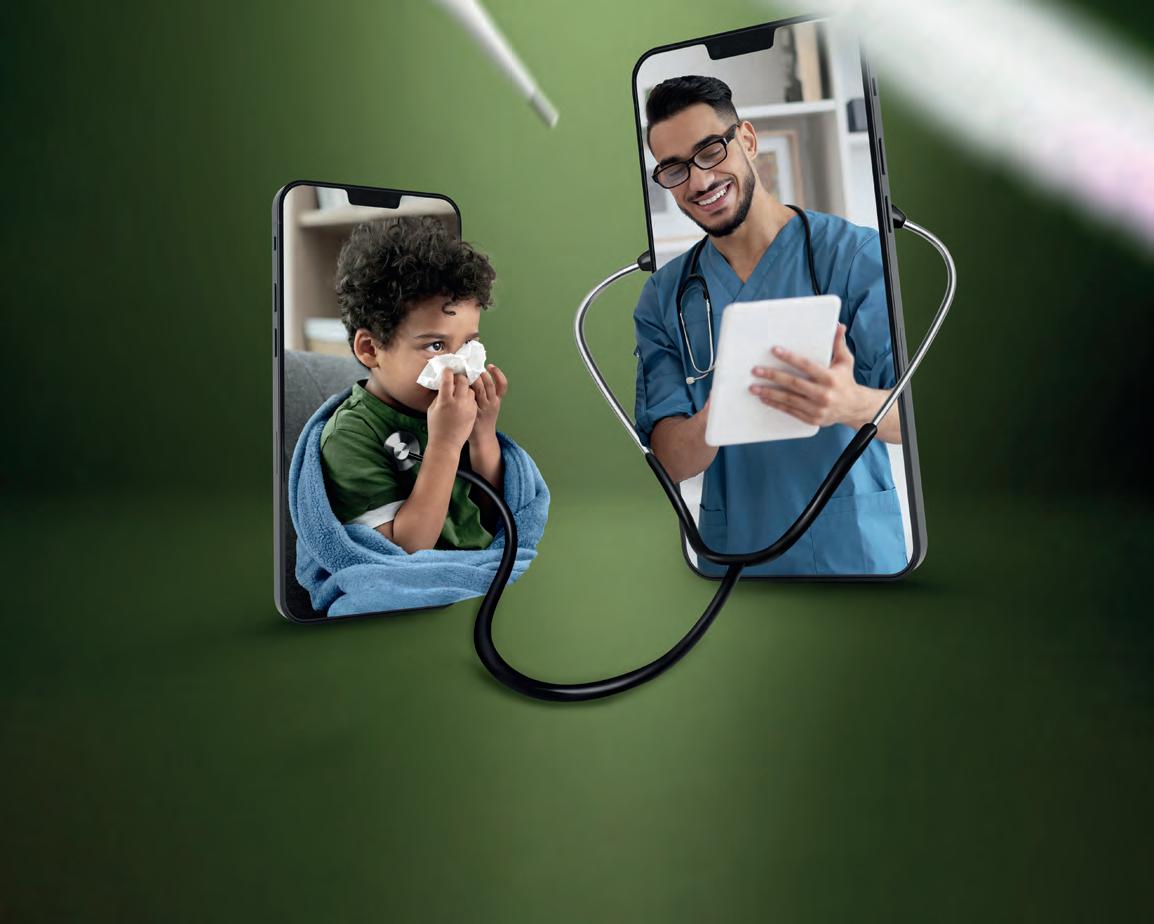
Placing the reach of a doctor and medicine at the touch of a button and making healthcare delivery remotely possible is the power that telehealth has brought to the layperson.
Telehealth is no longer a futuristic concept—it is a reality shaping global healthcare. With the UAE at the helm of digital health innovation, residents have access to world-class medical care within the palm of one’s hand. Latest advances ensure quality healthcare is not just a privilege but a right for all.
Take the case of Dubai resident, Sarah Ahmed* nervously watched her toddler’s fever climb. It was past midnight, and the thought of bundling up her child for a hospital visit was daunting. Instead, she opened an app,
booked an immediate consultation, and within minutes, a doctor from a leading healthcare provider in the UAE was on a video call, guiding her on how to manage her son’s condition. By morning, the fever had subsided, and Sarah breathed a sigh of relief, and thanked the telehealth service.
The use of digital technology to provide medical services remotely, has revolutionized the way people access healthcare. From virtual consultations to remote patient monitoring and AI-powered diagnostics, telehealth is bridging geographical gaps and transforming healthcare accessibility worldwide.
As per the latest business reports,
the global telemedicine market size was valued at $97.15 billion in 2023 and is projected to reach $432.31 billion by 2032.
The UAE has been at the forefront of this revolution, with initiatives like the Dubai Health Authority’s (DHA) ‘Doctor for Every Citizen’ program, launched in 2019, ensuring residents have round-the-clock virtual access to medical professionals.
Ever since the onset of the pandemic and even prior to it, the UAE has rapidly adopted telehealth as part of its broader strategy to enhance healthcare accessibility and efficiency. The country’s robust digital infrastructure, high smartphone penetration (99% *Name changed as per
as of 2023), and government-backed telemedicine initiatives have fuelled its growth.
During the COVID-19 pandemic, the UAE saw a 500% increase in telehealth consultations, demonstrating both demand and the effectiveness of virtual healthcare services.
Institutions such as Abu Dhabi’s SEHA and all private healthcare entities such as the American Hospital, NMC, Mediclinic, King’s College Hospital, Prime Healthcare Group, the Cleveland Clinic Abu Dhabi, the Aster DM Healthcare group and others such as the Health Hub have expanded their telemedicine offerings, making remote healthcare consultations more accessible than ever.
It’s the win-win for both sides. On the one hand, patients are spared the trouble of travelling to hospital on every single occasion. This works well for patients in outskirts and remote places. On the other hand, it is a sustainable method for institutions to conserve expenditure.
According to a study, companies can save up to $6,000 per employee annually by incorporating telehealth into their wellness programs.
For millions in remote areas or underserved regions, telehealth provides a lifeline to quality medical care. A resident in Ras Al Khaimah can consult with a top cardiologist in Cleveland or a mental health expert in London without the need for expensive travel. Platforms like UAE-based Altibbi, the region’s first digital health platform, are democratizing healthcare access across the Middle East and North Africa.
A patient in Dubai with a rare condition can seek a second opinion from Mayo Clinic or Johns Hopkins experts through telehealth platforms, ensuring world-class treatment guidance without delays. The Cleveland Clinic Abu Dhabi’s Virtual Second Opinion program is one such initiative connecting local patients with global medical expertise.
The Department of Health – Abu Dhabi launched the DOH RemoteCare app using which patients can receive healthcare at their own homes, without visiting a hospital or clinic physically. According to the UAE government’s official healthcare portal, this app has a tool for examining symptoms, diagnosing non-emergency cases, booking appointments and getting tele-consultations with doctors via voice or video calls or text messages.
Chronic diseases like diabetes and hypertension, prevalent in the UAE, require regular monitoring. Telehealth enables preventive screening, realtime tracking through wearable devices, reducing hospital visits while ensuring continuous care. Remote patient monitoring could lead to a huge reduction in emergency visits for chronic disease patients. A patient in remote Hatta village is able to consult his doctor in Dubai from the comfort of his home, in a regular manner and keep a check on his health. Diagnostic screening is possible through telehealth and patients can undergo X-ray, ECG, and other scans even while at home, with the data being transmitted digitally to their care giver. Thanks to Electronic Medical records, doctors have the patient’s history at a glance digitally whilst in consultation providing them all the tools to give a clear diagnosis and treatment recommendation. Most medicines can be ordered digitally and delivered to
a patient’s doorstep. Some hospitals in Dubai are also deploying drones to deliver medicines within a close radius, cutting back on the delivery time dramatically.
Mental health is often stigmatized, leading many to avoid in-person visits. Teletherapy platforms like Mind Mina and the UAE’s Thrive Wellbeing Centre offer confidential, remote counselling, helping individuals receive support without societal pressures.
Artificial Intelligence (AI) is reshaping telehealth. AI-powered chatbots assist in initial diagnoses, while predictive analytics help doctors anticipate patient deterioration. There are several other ways that AI has empowered this realm and healthcare institutions are investing in AI tools as well as training their staff in familiarization of AI protocols.
Despite its benefits, telehealth faces challenges. Regulatory concerns, data privacy issues, and the digital divide between urban and rural populations pose hurdles. The UAE government has taken proactive steps, introducing robust telehealth regulations to ensure patient safety and data security. Moreover, a majority of health insurances are now including telehealth in their coverage plan. This integration will further boost adoption rates and solidify telehealth’s place in mainstream healthcare.
Whether for a midnight fever scare or managing chronic illnesses, one thing is certain: the doctor is always inwherever you are.
Youth fitness icon and blogger Cyril Garg outlines the multifold health benefits of High Intensity Interval (HIIT) training for teenagers
High-Intensity Training (HIIT) has emerged as a powerful tool in strengthening the heart, improving endurance, and enhancing overall metabolic health. But what makes HIIT so effective, and how can individuals incorporate it into their routines? Cyril Garg, a Dubai -based fitness enthusiast, avid blogger and student at Delhi Private School Sharjah, dives right in.
“HIIT is more than just a fitness trend—it's a scientifically backed method for improving cardiovascular health, boosting endurance, and enhancing overall metabolic function. With the right approach, tailored to individual fitness levels and goals, HIIT can be a powerful tool in achieving a healthier, stronger heart. Consistency, patience, and proper form are the cornerstones of any successful fitness journey,” he says.

The purpose of High Intensity Interval Training HIIT) is to improve cardiovascular fitness in the shortest possible time with maximal gains. A quick rise of heart rate at the start of an exercise program is the sign of unfit cardiac state or limited cardiac conditioning. By regular HIIT even for 20 min, twice a week, cardiac conditioning can be improved easily,” remarks Dr Rajeev Lochan, Interventional cardiologist at Al Zahra Hospital, Dubaii
physical work done, by increasing volume of the blood pushed out of the heart in each beat or stroke volume and cardiac output and enhancing oxygen uptake efficiency. Precautions should be taken to gradually increase the HIIT duration and intensity within your limits,” advises Dr Lochan.
Cyril, who has been studying the myths and facts surrounding teenage fitness and his blogs have been carefully curated based on information given by a team of experts in the field of teenage fitness, encourages all teenagers to indulge in HIIT in their fitness schedule.
Enhances Heart Efficiency: HIIT improves the heart's ability to pump blood more effectively, reducing strain over time.
Lowers Blood Pressure: The intense nature of HIIT improves arterial flexibility, which in turn reduces hypertension.
Regulates Blood Sugar: HIIT increases insulin sensitivity, making it particularly beneficial for individuals at risk of diabetes.
HIIT involves short bursts of intense exercise followed by brief recovery periods. This alternation between high effort and rest pushes the cardiovascular system to adapt and become more efficient.
“HIIT burns body fat and improves muscle mass, hence it not only reduces body weight but also improves cardiac endurance. The lower heart rate achieved after training allows the same amount of
Reduces Inflammation: Chronic inflammation is a key contributor to cardiovascular disease, and HIIT has been shown to lower markers of systemic inflammation.
Improves Lipid Profile: Regular HIIT sessions can increase HDL (good cholesterol) levels while reducing LDL (bad cholesterol) and triglycerides.
Even just 15-20 minutes, three times a week, can deliver remarkable heart health benefits. The key is to push yourself during the work intervals while allowing enough recovery to maintain intensity,” says Cyril who is a regular at the gym and loves to motivate fellow students with a blog on fitness.
Cyril cites Dr Deepak Gandhi (Pediatrician and level 3 fitness trainer in Dubai) . He is supported by ACSam guidelines for exercise and prescription testing book that says children below the age of 14 years must not attempt vigorous exercises as their skeletal framework is immature . “Children have a considerably lower anaerobic capacity compared to adults, limiting their ability to perform sustained vigorous intensity exercise. Kids are not ‘mini’ adults; though their physiological responses to exercise are qualitatively like that of adults, there are important quantitative differences that should be heeded.
However, he promotes HIIT as a good way of staying fit for teenagers above 14 years of age and shares how HIIT helped him improve his sports performance in games like basketball and tennis that typically involves some sort of speed or power development.
Quick tips on integrating HIIT into your exercise routine
Start with a Warm-Up: A 5-minute dynamic warm-up with light jogging and stretching primes the body for intensity.
Choose an Exercise Format: Sprinting, cycling, jumping rope, or bodyweight movements like burpees and squat jumps all work well.
Follow a Work-to-Rest Ratio: A common formula is 30 seconds

Cyril Garg Dubai -based fitness blogger & teen icon
of intense exercise followed by 30-60 seconds of rest. Repeat for 15-20 minutes.
Monitor Intensity: Aim for 80-90% of your maximum effort during work intervals.
Cool Down: A 5-minute cooldown with light movement and stretching aids recovery and prevents sudden drops in blood pressure.
Cyril cautions, “HIIT should be tailored to individual fitness levels. If you're new to it, start at a slow pace and gradually increase intensity. Consistency is more important than all-out effort.”
Tracking progress is essential for staying motivated and ensuring that your fitness journey is on the right track. This would involve checking body weight, measuring key areas such as the chest, arms, legs, abdomen, and neck that would allow an individual to identify even the smallest changes in the body. “At the very least, progress should be assessed once a week,” advises Cyril while emphasizing the importance of combining HIIT with strength training for optimal results.
“Strength-based training programs should be incorporated for both fat loss and muscle development. Tracking calories is another essential component—knowing how many calories you burn versus how many you consume daily helps in maintaining the right balance for your fitness goals,” he adds.
Do not succumb to binge eating. Binge eating is one of the biggest obstacles in a fat loss journey. Avoiding excessive, uncontrolled eating is crucial to seeing consistent progress.
Patience and proper form are key to long-term success in any fitness regimen. "Achieving results requires consistency and perseverance. Maintaining proper form and discipline inside and outside the gym are key to longterm success.
While HIIT is beneficial for most people, those with pre-existing heart conditions or high blood pressure should consult a physician before beginning. H
It’s not starvation, it’s not deprivation and it is certainly not the weight-loss, the -supplement way. There can be a happier, more balanced way of knocking off the pounds and the lard, nutritionists think this is the safer, more stable path to weight loss.
It’s not rocket science. Cut back on the number of calories you consume by replacing your high calorie foods such as burgers and fries with salads and fruits so. Once your calorie intake goes down and your energy expended requires more calories than what you have consumed, then our innate intelligence directs the body to dip into the fat reserves for energy requirements. Worldwide studies on obesity being carried out reveal that cutting back on calories is one of the most effective ways to reduce weight. Let us begin with the

Calories are the unit in which energy released through the food you ingest is measured. We require energy from food for our body.
Any food or beverage contains energy locked away in chemical bonds. Once we consume a food item and it is metabolized by our body it releases energy that is the fuel our body required for basic metabolism and survival.
So, let’s say we have an apple. With fiber and its glucose content it delivers 80 calories, which will be assimilated by our body and expended as fuel. The quality of fuel is important. In this case, the apple with its fiber and nutrition content requires equal amount of energy to be digested thereby not really adding to your weight. However, if you are ingesting food with too many simple carbohydrates such as a soft drink or shortbread cake piece, the sugar in it is directly absorbed by our blood stream, spiking our blood sugar. In other words, sugar from foods with high glycemic index hit our blood glucose, resulting in a sudden rise and is absorbed directly causing a sudden drop too, resulting in sugar cravings making a person ingest more calories than required. The result - excess calories are converted
into fat and stored by the body and the weight creeps up. It is important to choose food groups that have dense carbohydrates (high protein, fats and fiber) and less fat from oils.

So how does cutting back calories work?
So, let’s say, your calorie requirement for your height and weight is 1500 calories per day and you cut back by 500 calories. As per the Mayo Clinic, cutting back 500 calories can help lose as much as ½ pound weight per week and two pounds per month. This may not hold true for everyone. There are

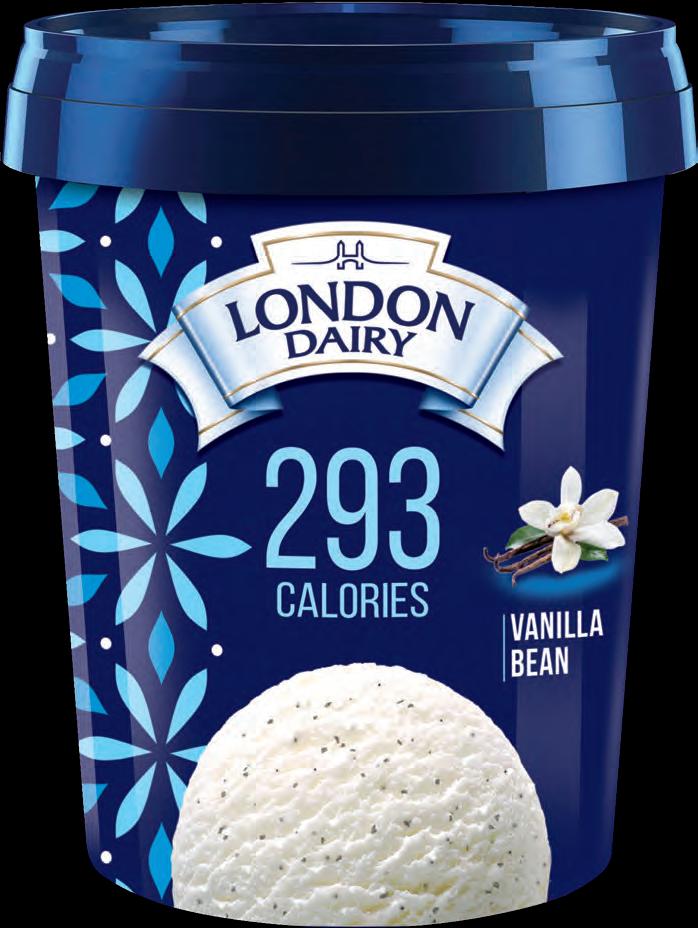

such as individual body metabolism, extent of physical work that helps expend energy among other things. However, an individual can find out his or her threshold when weight loss is triggered and in consultation with a dietician and physical trainer work out the math to achieve a steady weight loss.
For low calorie warriors there is good news. London Dairy has come out with five great flavors, pureness of ingredients, same classic taste but a delightful guilt-free indulgence for weight watchers.
Vanilla Bean- comes in a tub with four servings with only 73 calories per serving. Made from skimmed cow milk and vanilla bean, every serving has the rich creamy taste blended with the delicate vanilla bean and sugar just 4gm per serving. It is the perfect treat for someone on low calorie diet looking to cheat on ice cream occasionally.


Salted Caramel: For those who savor a mild salty blend in their ice cream, choose this deliciously rich toffee-flavored low fat ice cream with swirls of salted caramel sauce. At 90 calories per serving of which calories per serving from carbohydrates are limited to five per cent this is a dieter’s delight. It’s a deeply satisfying occasional indulgence that is not likely to upset your diet regimen if one were to limit oneself to one serving.

If you fancy an earthy nutty taste in your cool low-calorie diet, choose this low-fat ice cream with peanut butter cup and swirls of real peanut butter, to satisfy one’s sweet tooth without busting the diet with only 91 calories per serving and calories from carbohydrates per serving have been limited to 5 gm per serving only. The flavors are real peanut butter with skimmed milk and the taste is intact and faithful to the regular ice cream flavors.
Hazel Nut Chocolate: If you have a weakness of chocolate, this flavor with low-fat hazel-nut ice cream made from skimmed cow’s milk with swirls of hazel nut sauce is a soul-satisfying flavor. With sugar limited to 6 gm per serving and calories restricted to 93 per serving, this dessert is highly recommended for once-in -a-while temptation.
Birthday Cake: The birthday cake flavor absolutely takes the cake! A scoop looks ‘’slurp able” with crunchy rainbow sprinkles and actual pieces of cake in creamy low-fat ice-cream made from skimmed cow’s milk, this one is irresistible. The entire tub is four
If you are looking to add a little crunch to your ice cream treat, opt for London Dairy flavors in low calorie that come in crunchy cones of 60 ml. As they say you need not break a bank to feel rich, in this case, you need not bust your diet to get that deep contentment of enjoying an original flavor, rich, creamy ice-cream high on taste and low in calories!


servings weighing 464 gm at 365 calories for four servings. For the conscientious low-fat dieter, one serving of 184 ml at 86 calories and only 7 gm carbohydrates per serving, is doable without breaking any major diet rule. H
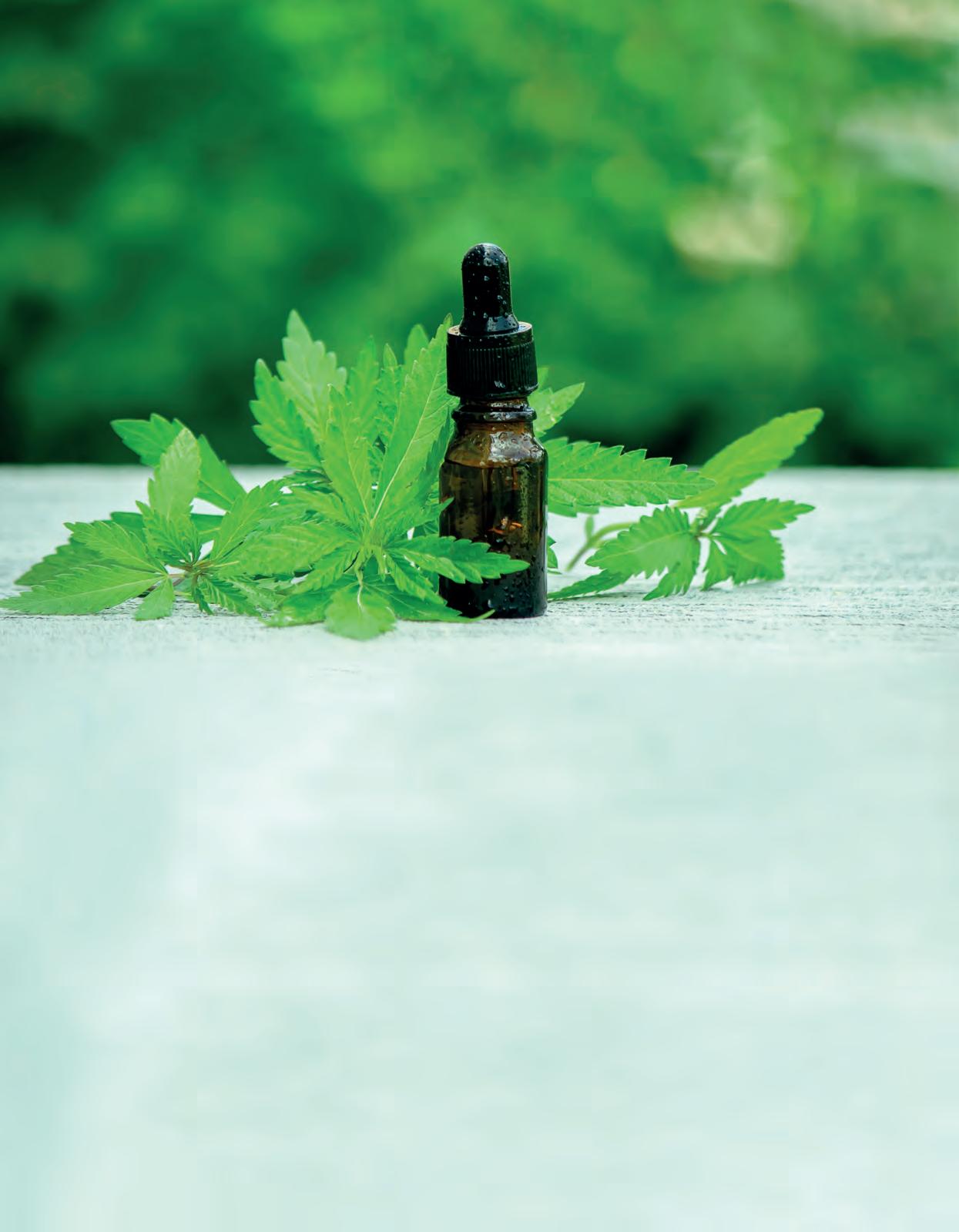
In a three-part series, Flora Abbruzzese, managing director and founder of Medalpharma, Italy presents the case for phytotherapy, a new branch gaining popularity because of its non-toxic, natural ingredients and unique combination with synthetic molecules of medicine.
As the world is increasingly turning towards nature to be more sustainable and less harmful to our health, there has been a resurgence of interest in plant-based cures. It is no longer a fantasy to be able to manage chronic conditions with least side effects using plant-
based molecules to target health conditions.
It has been wisely said that “nature is an inexhaustible source of medicine” (Buffoni, 1996).
This is where the science of phytotherapy steps in.
The study of the use of natural, plant-based extracts in treating health conditions efficaciously is defined as phytotherapy. It is different from herbal panaceas that grandmothers concocted for good use in our families for a long time.
Flora Abbruzzese, a prominent exponent and promoter of Phytotherapy as well as the founder of Medalpharma, based in Italy, elaborates on this. “In modern times, there has been a resurgence
of interest in medicinal plants which are now an intrinsic part of complementary medicine. Phytotherapy is different from traditional herbal medicine. It is a science-based medical practice and thus is distinguished from other, more traditional approaches, It relies on an empirical appreciation of medicinal herbs and which is often linked to traditional knowledge. Medalpharma is committed to the idea and is creating great alternatives in complementary treatment for chronic and lifestyle conditions.
The use of plant-based remedies has always accompanied the journey of humanity up to the present day. In this context, phytotherapy has become a branch of medical
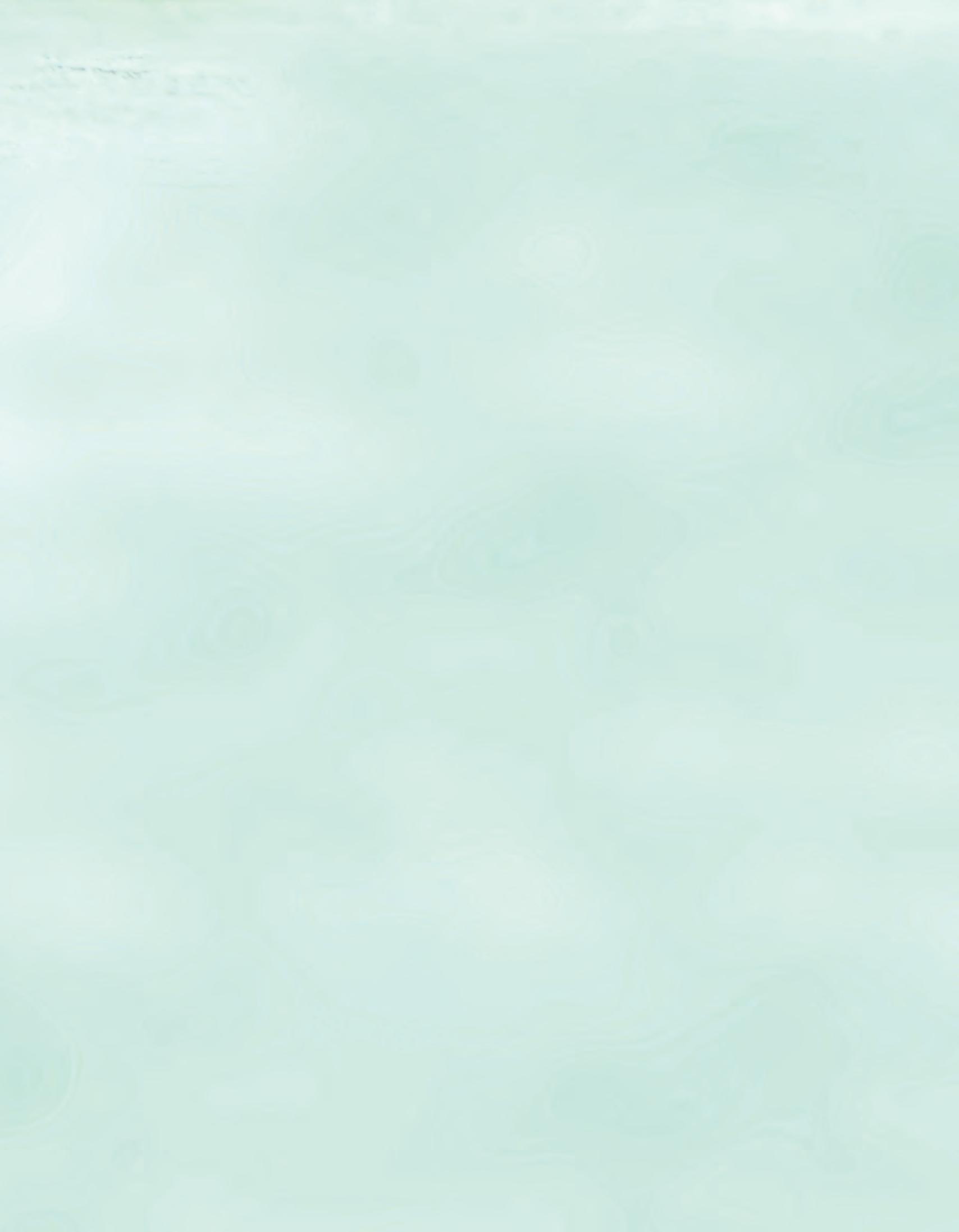
science that deals with the study of the potential healing properties of plants and their derivatives. The use of herbs and plants in medicine is as old as humankind. Phytotherapy follows the same practices as conventional medicine, providing indications for possible therapeutic uses of a natural derivative that has been scientifically proven to be useful. It also indicates dosages, possible side effects, potential interactions with other medications, and the toxicity of preparations. After all, many active ingredients in medicines are extracted from or derived from plants.
Flora Abbruzzese Founder Medalpharma, Italy

Flora reiterated, “Phytotherapy has very ancient origins, with the earliest evidence dating back to ancient Egypt and Chinese medicine, but also to Greece, where the father of modern medicine, Hippocrates, mentioned natural remedies in some of his writings. One cannot forget Galen, who coined the term "galenic preparation," referring to a pharmaceutical form made from natural substances intended for specific diseases. Over the centuries, discipline has evolved, using the therapeutic properties of plants to improve individual health and well-being, as well as to prevent or treat diseases.”
It was only towards the end of the 19th century that modern phytotherapy emerged in Europe, more precisely in Germany. Germany has a significant scientific tradition in phytotherapy. It was the first country to combine herbal tradition with modern research techniques, a model that influenced the rest of Europe and the entire world. In 1964, the European Pharmacopoeia was established with the aim of standardizing European pharmaceutical standards. This led to the creation of a collection of regulations that define in detail the quality, purity, dosage, and production standards for medicines and active ingredients used in Europe. Within this important regulatory collection, guidelines are also provided for raw materials and medicinal plants to establish specific quality standards for phototherapeutic preparations.
Flora further specifies how phytotherapy works. “This practice is based on the recognition that each plant has specific active ingredients that can have different effects on the body, suggests its use as a complement or alternative to conventional medicine. In recent decades, it has gained increasing credibility thanks to scientific research, which has verified the efficacy and safety of many medicinal plants.”
However, she cautions that although phytotherapy is based on the concept of "natural," it should not be considered without risks. Improper use, incorrect dosages, or interference with conventional medications can lead to significant side effects. Therefore, phytotherapy involves a range of benefits and risks.
Among the benefits, we find therapeutic efficacy, fewer side effects, the possibility of treating chronic diseases while reducing the use of conventional medications, and the prevention of many diseases.
Regarding risks, we discuss toxicity, possible interactions with medications, foods, or other phototherapeutic products, and variable quality, which affects the effectiveness of treatments or the need for prolonged use to achieve noticeable results.
If you are looking to find toxin-free, natural and efficacious cures for good health, and desirous of beating the onslaught of age, phytotherapy will be the key therapy to integrate into your life.

….. to be continued in the next issue…. Testimony on life changing impact of phytotherapy.
Founded in 2007 as a business initiative to promote innovative ideas, Medalpharma based in Calcinaia (Pisa) in Italy, was inspired by the principles of modern phytotherapy and has adopted the guidelines set by the European Pharmacopoeia, embracing the connection between the strength of phytotherapy and the concreteness of synthetic molecules. Two seemingly opposite worlds, yet two different but complementary approaches in the field of medicine and health. Phytotherapy, more natural and traditional, and synthetic molecules, more modern, resulting from scientific research and laboratory activities. Their products are available online and alsoand distributed throughout Europe.
Although it is true that for some diseases, synthetic drugs are often irreplaceable, phytotherapy and traditional medicine intersect. In fact, in an era of growing interest in natural medicine, as well as extraordinary advances in pharmaceutical chemistry, it is possible to leverage the synergy between these approaches to achieve effective and balanced treatments.
Today, more and more research show that phytotherapy and synthetic molecules are not competitive but can indeed integrate. Many modern treatments, in fact, combine the best of both approaches.
Depending on the preparation form in which they are made, phyto-therapeutic products can be taken and absorbed in various ways,

orally, topically, or by inhalation, interacting with the body.
The most significant effects resulting from the intake of phytotherapeutics can be summarized as: antioxidant, anti-inflammatory, antiviral, antihistamine, and antiedematous actions.
The effectiveness of phototherapeutic products used to treat specific health issues is linked to their absorption, which occurs through several phases, including ingestion, absorption, distribution, and elimination.
In turn, absorption depends on factors such as the form of the product, bioavailability, and interaction with the biological system. However, the greater affinity of the natural chemical structures of phyto-therapeutics with the physiological activities of organs allows for a longer retention of substances in the body, with less
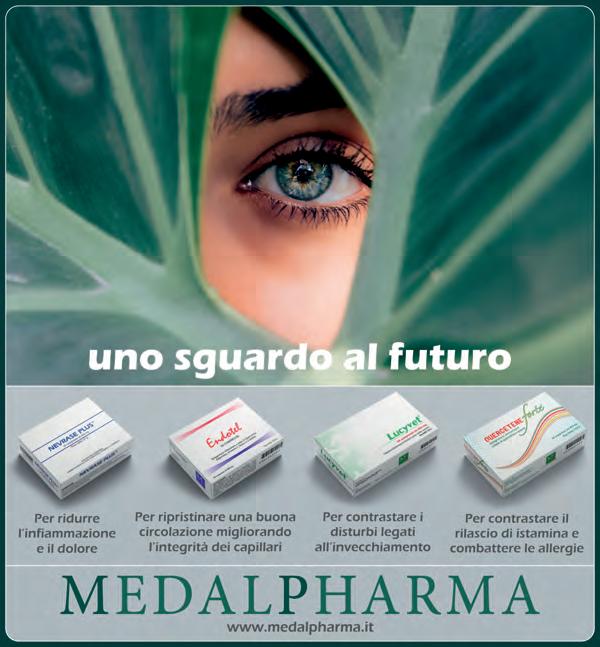
intense and immediate effects but more lasting over time.
From the very beginning, Medalpharma has focused on specific natural substances that have demonstrated profound pharmacological and clinical properties, from which therapeutic products have been developed in the form of tablets, capsules, and granules. The use of dry extracts that are titrated, standardized, and of certified quality are Medalpharma's strengths in meeting the daily need of individuals to "feel well" and "stay in shape." To achieve these objectives, the company has created original formulations of Phyto complexes, considering published scientific studies on individual active ingredients, clinical studies validating their benefits, pharmacological research on the substances used, studying their synergistic actions, and certifying the high antioxidant power of each raw material.
For each disorder, plants must be selected based on their specific therapeutic properties, to create targeted products that naturally address health issues such as inflammation and pain, digestive disorders, anxiety and sleep disturbances, cardiovascular and circulatory problems, eye conditions, neurological issues, and help slow down the physiological aging of the body.
Their formulations are safe and effective and released for use only after careful clinical monitoring and analysis. H
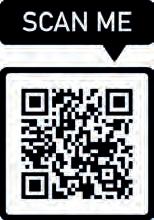


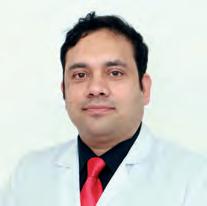

Dr Satyabrata Garanayak
Specialist Urologist, Department of Urology, Thumbay University Hospital, Ajman
Q: During summers, men often suffer from urinary incontinence - what are the reasons, side effects, and what should be done?
A: Male urinary incontinence, or poor bladder control, usually is a health issue which usually occurs in older men and is linked to the issue of enlarged prostate gland.
However, urinary incontinence can also occur in younger men especially during peak summers and can be triggered by conditions such as an overactive bladder or diabetes.
It can worsen during summer due to dehydration, excessive sweating, and reduced fluid intake. These factors lead to concentrated
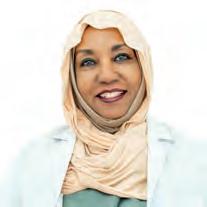
Dr Shadia Musa
Consultant Gynecologist, Department of Obstetrics & Gynecology, Thumbay University Hospital, Ajman
Q: How can women, especially with diabetes, prevent thrush infections that are common in warm, moist weather?
A: Fungal and yeast infections like thrush are quite common in women during summers. Women complain of vaginal thrush during summers especially those with diabetes as bacteria and fungi thrive in moist,
damp and dark areas of the body. To reduce risk, it is essential to maintain good blood sugar control. Wearing loose, breathable cotton clothing helps reduce moisture retention.
Fabrics like nylon and spandex must be avoided during warmer months as these are not breathable fabrics and trap the moisture and heat creating conditions conducive for these infections to thrive.
urine that irritates the bladder. Side effects include skin irritation, sleep disturbance, and risk of infections. Men are advised to stay well-hydrated, have a healthy diet, perform pelvic floor exercises, and manage underlying conditions. If symptoms persist, urological consultation is essential for proper evaluation and treatment.
Personal hygiene should be gentle—avoid harsh soaps and douching. Probiotics may support healthy vaginal flora. After swimming or sweating, change into dry clothing promptly. Regular gynecological check-ups are recommended for early detection and management. Staying wellhydrated and avoiding unnecessary antibiotic use also helps in preventing recurrent infections.


Even as colorectal cancer remains a critical public health challenge worldwide, technology is stepping up to support screening effectiveness across the world.
One promising advancement in colorectal screening is Fujifilm’s CAD EYE, an AI-powered computer-aided detection system for colonoscopy. CAD EYE integrates with endoscope video feeds to assist endoscopists in real time. Using deep learning algorithms, the system automatically alerts the endoscopist to potential polyps or lesions by overlaying visual indicators (e.g. a highlighting box) and sounding an audible signal via ELUXEO® endoscopy system. This happens live during the procedure without disrupting the normal workflow, helping ensure that even flat or subtle lesions at the edge of view are not overlooked.
Beyond detection, CAD EYE can also characterize polyps in real time as benign or suspicious for cancerous change. It provides a color-coded visual cue to distinguish hyperplastic (non-neoplastic) polyps from neoplastic ones, essentially offering an instant second opinion to inform the endoscopist’s decisionmaking. This feature aims to raise diagnostic accuracy to expert levels, giving less experienced endoscopists confidence in assessing lesions.
Fujifilm’s CAD EYE has been validated in clinical practice, with studies demonstrating significant improvements in polyp detection. In a large screening trial, adding CAD EYE increased the adenoma detection rate from about 45 to 54 per cent, and resulted in roughly 17
per cent more adenomas found per colonoscopy compared to standard practice. Crucially, these gains were achieved without extending procedure time. The AI performance in identifying pre-cancerous lesions has been comparable to that of expert endoscopists, and it markedly improves detection for less experienced endoscopists. This evidence has led to regulatory approvals worldwide, including U.S. FDA clearance in 2024. CAD EYE is increasingly being adopted as a valuable tool to enhance the quality of colonoscopy screenings.
Designed for seamless integration, CAD EYE works as an add-on to Fujifilm’s ELUXEO® endoscopy system, making adoption straightforward for hospitals. The AI can be activated or paused with a simple press of a button on the endoscope control, underscoring its user-friendly implementation in busy clinics. Notably, the system’s intuitive interface earned a Good Design Award for its ergonomic design. Complementing CAD EYE’s detection and characterization capabilities, Fujifilm has also introduced SCALE EYE, a measurement function designed to support endoscopists in estimating lesion sizes in the colon.
Fujifilm’s pioneering work in AIpowered diagnostics exemplifies how cutting-edge technology can transform healthcare. With wider adoption of innovations like CAD EYE and SCALE EYE, the global fight against colorectal cancer gains a powerful ally.
Your eyes are not only the window to the world but also a window to your health.
Introducing AI-Powered Retinal Screening by Alfa Diag, that with the help of innovative AI technology from Airdoc can screen for 35 eye conditions and 9 chronic disease risks, such as diabetes, anaemia, hypertension, etc. Diabetic retinopathy, a leading cause of blindness among working-age adults, can be detected early with Airdoc as well.
In a minute, that takes to conduct the retinal scan, and three minutes to create an assessment report, nine chronic disease risks can be detected with 95 percent accuracy. The algorithm has been trained on over 30 million retinal images, enabling to provide unique insights into chronic disease detection.

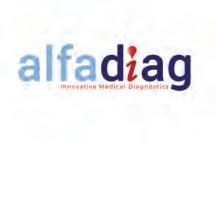
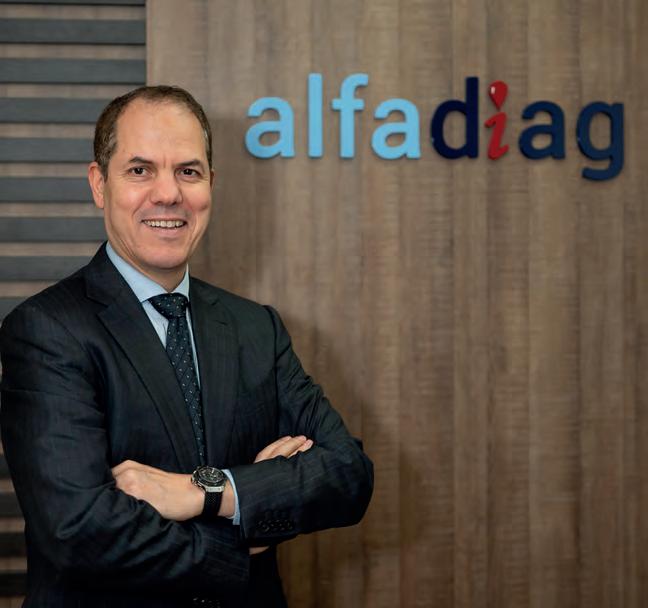
Speaking to HEALTH, Adel Djalal, MD of Alfa Diag that has introduced Airdoc said, “This is a game-changer in AI-driven heath assessment. One simple screening can give a quick result and detect early serious conditions. The deep learning algorithm used by our FUNDUS camera helps to provide a 10-year risk assessment for cardiovascular diseases. A study published in The Lancet Digital Health (2021) conducted by Zhongshan Ophthalmic Centre at the Sun Yat-sen University which is the permanent headquarter of Asia Pacific Academy of Ophthalmology, indicates that the performance of the Airdoc algorithm model is equivalent to that of ophthalmologists with better stability based on evaluation of 260,000 images.”
In the leading UAE hospitals where this AI-Powered Retinal Screening
has been implemented, several patients discovered they had early signs of cardiovascular disease and diabetes. As we know, early detection is the key in managing chronic diseases. Imagine what a crucial role such technology can play in preventive screening and management of chronic diseases globally and in UAE with a high incidence of diabetes and heart diseases!
The future of AI-based health screening is clearer than ever –through the lens of your eye.
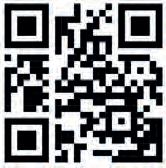

In a world that never stops moving, where deadlines loom, notifications ping incessantly, and the pace of life feels like a relentless sprint, finding moments of calm can seem like an impossible task. Yet, amid this chaos, ancient practices like meditation and breathwork offer a sanctuary, a way to slow down, breathe, and reconnect with our inner individual.
For Sumit Manav, the founder of Lifestyle Yoga UAE and Manav Yoga UK, these practices are not just tools for relaxation; they are essential for cultivating a balanced, harmonious life.
“Fitness isn’t about intensity; it’s about consistency,” says Sumit who considers breathwork as a essential or cultivating a balanced and harmonious life. In an era dominated by high-intensity
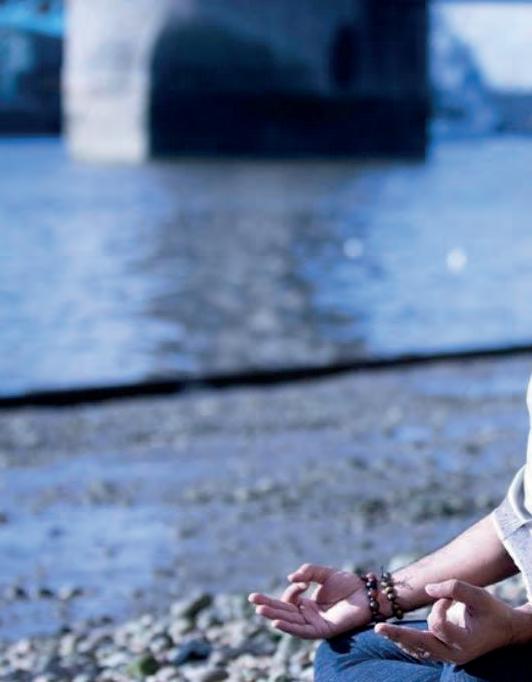
workouts and quick-fix fitness trends, he advocates for a more sustainable approach to wellbeing, one that prioritizes mindful movement, stress management, and inner calm. “Meditation and breathwork are not just about reducing stress; they are about creating a deeper connection with yourself.”
Chronic stress triggers the release of cortisol, a hormone that, in excess, can lead to inflammation, high blood pressure, and a weakened immune system. Over time, this can contribute to serious health issues, including heart disease, anxiety, and depression.
This is where meditation and breathwork come in. These practices activate the parasympathetic nervous system, often referred to as the “rest and
digest” system, which counteracts the body’s stress response. “Yoga and breathwork help regulate the heart rate, reduce cortisol levels, and improve heart rate variability,” says Sumit. “This not only lowers stress but also enhances overall cardiovascular health.”
Meditation has been shown to reduce inflammation, improve focus, and make one more mindful. Breathwork, on the other hand, helps oxygenate the blood, calm the mind, and bring a sense of grounding. Together, these practices form a powerful toolkit for managing stress and fostering emotional resilience.
This is one of the most accessible and effective ways to reduce stress. “In just 10-20 minutes, breathwork can help you recharge and reconnect,” says Sumit. “It’s a game-changer for anyone feeling overwhelmed or disconnected.”
One of the simplest yet most powerful breathwork techniques is diaphragmatic breathing, also known as belly breathing. Here’s how to do it:
1. Find a Comfortable
Position: Sit or lie down in a comfortable position. Place one hand on your chest and the other on your abdomen.
2. Inhale Deeply: Breathe in slowly through your nose, allowing your abdomen to rise as your lungs fill with air. Your chest should remain relatively still.

3. Exhale Fully: Exhale slowly through your mouth, letting your abdomen fall. Focus on releasing all the air from your lungs.
4. Repeat: Continue this pattern for 5-10 minutes, gradually extending the length of your inhalations and exhalations. This technique not only calms the nervous system but also improves oxygen flow, helping you feel more centered and present.
Another effective breathwork practice is alternate nostril breathing (Nadi Shodhana), which balances the left and right hemispheres of the brain, promoting mental clarity and emotional stability. To practice:
1. Sit Comfortably: Sit in a comfortable position with your spine straight.
2. Close Your Right Nostril: Use your right thumb to close your right nostril and inhale deeply through your left nostril.
3. Switch Nostrils: Close your left nostril with your ring finger, release your right nostril, and exhale through the right side.
4. Repeat: Inhale through the right nostril, close it, and exhale through the left. Continue this pattern for 5-10 minutes.
Meditation is often misunderstood as a practice that requires complete mental silence. It’s about observing your thoughts without judgment and gently guiding your focus back to the present moment.
“Meditation isn’t about stopping your thoughts; it’s about creating space between you and your thoughts,” says Sumit.
For beginners, guided meditation can be a helpful starting point. Apps and online videos offer a
variety of guided sessions, ranging from 5 to 30 minutes. These sessions often focus on themes like gratitude, self-compassion, or stress relief, making it easier to stay focused.
Another powerful meditation technique is body scan meditation, which involves mentally scanning your body from head to toe, noticing any areas of tension or discomfort. This practice not only promotes relaxation but also enhances body awareness.
For those who struggle with traditional meditation, Yoga Nidra, or yogic sleep, offers an accessible alternative. “In just 2030 minutes, you can achieve deep rest and rejuvenation,” says Sumit. This practice involves lying down in a comfortable position and following guided meditation that takes you through various stages of relaxation. It’s particularly effective for those dealing with insomnia or chronic stress.
These include:
Ignoring bodily signals: Pushing through discomfort or pain can lead to injury. Always listen to your body.
Neglecting breathwork: Breath is the foundation of both yoga and meditation. Don’t skip it.
Inconsistency: Like any practice, meditation and breathwork require regular effort. Even 5-10 minutes a day can make a difference.
Skipping warm-ups and cooldowns: These are essential for preparing the body and mind for practice.
Incorporating meditation and breathwork into your daily routine doesn’t have to be daunting. Start small— just 5-10 minutes a day— and gradually increase the duration as you become more comfortable. “Even short, focused sessions can create lasting benefits,” says Sumit
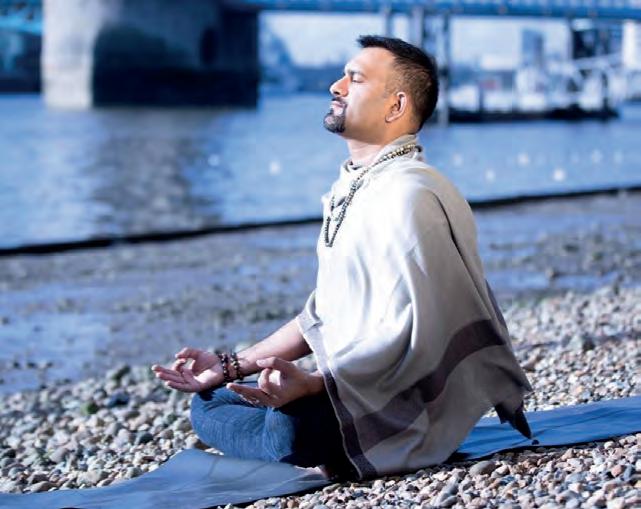

Breakfast, as the name suggests, is the first meal after a night long fast and the most important one. It’s crucial to choose breakfasts varieties that are high on taste, packed with nutrition and low on calories to deliver the right punch of energy boost, deliciousness and keep you pumped up with energy!
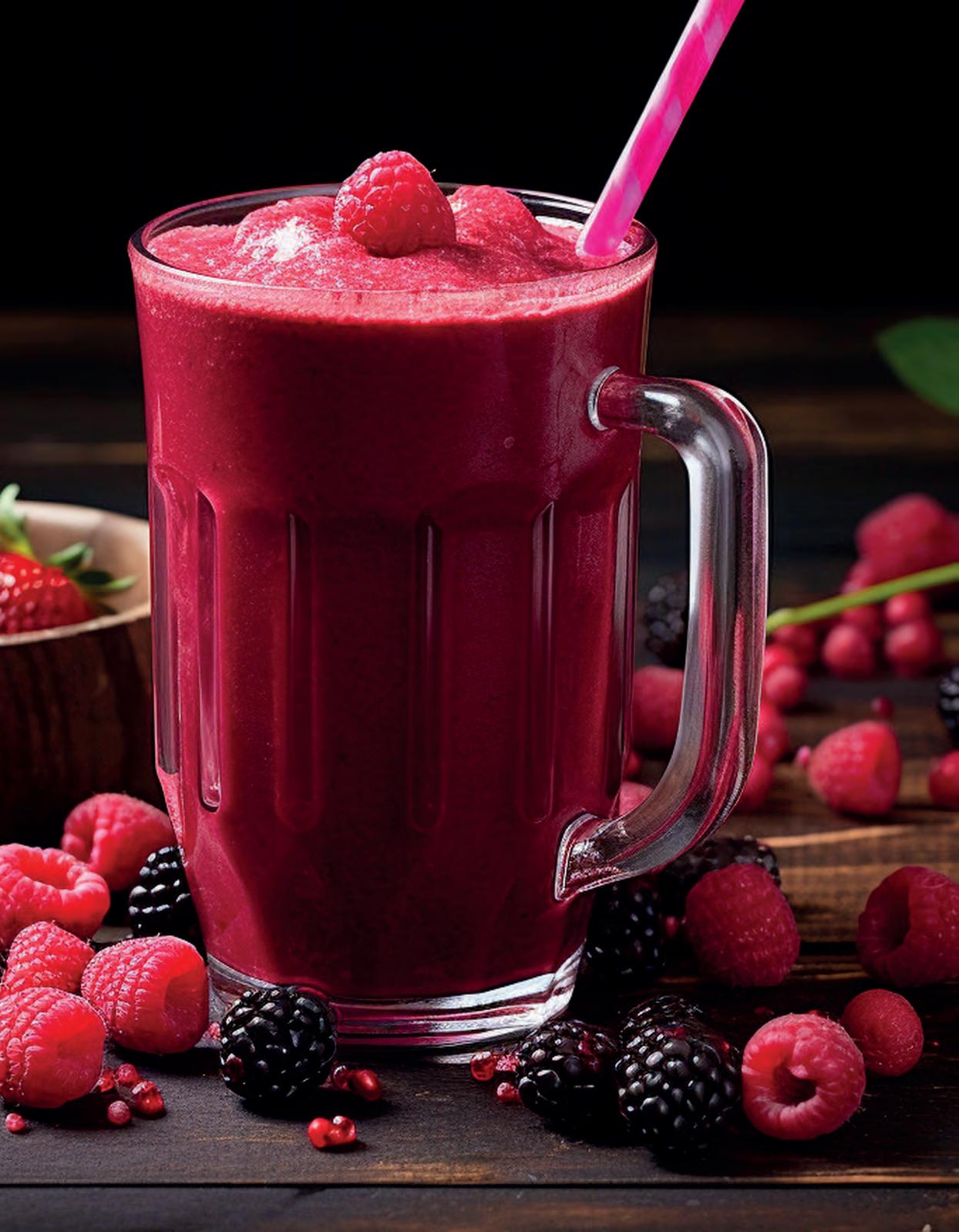
Ingredients
• Low fat yoghurt – one cup
• Mixed berries, frozen or fresh – a cup
• Roasted oats - two tablespoons (soaked overnight)
• Honey- one teaspoon (optional)
• Chia seeds – One teaspoon (soaked overnight)
• Almond and walnuts – two pieces each (soaked)
Method
• Take one cup of low-fat yoghurt and hang it in a clean white muslin cloth for two hours. Collect the water from the yoghurt to be added later to the smoothie
• Take a cupful of washed mixed berries (black, blue, raspberry and strawberry) and place it in the mixer jar
• Add the hung yoghurt, soaked oats, nuts, chia seeds and honey.
• Add the water from the yoghurt as required to thin the consistency as the smoothie will be very thick.
• Run the mixer for a minute, blending the mixture and then pulse to achieve the right consistency and froth. You can add some water and ice cubes as per requirement.
• Pour out the smoothie in a tall glass or glasses, garnish with chopped nut and fruit pieces and relish its fresh, creamy taste.

• Three variety of beans (chickpeas, pintobeans and black beans) either tinned or fresh – ½ cup each. If fresh wash and soak overnight, then steam in the morning.
• Tomato – One large (chargrilled and pureed)
• Red onion - One (chopped)
• Garlic clove- two, crushed
• Caraway seeds – ½ teaspoon, crushed
• Ginger – ½ inch, grated
• Cheese- cheddar, one-two cubes (grated)
• Chicken breast, two – cubed, marinated with lemon juice, salt and pepper and roasted. Vegetarians have the option of replacing this with cubed and grilled cottage cheese.
• Oregano, pepper, salt (to taste)
• Cilantro – two sprigs, chopped for garnish
• Olive oil – one tablespoon
• Whole wheat bread – toasted, four pieces
Method
• Take the beans in a bowl. If fresh, soaked beans, you will need to steam them for over 20 minutes.
• In a heavy bottomed pan, pour two tsps. of olive oil. When heated, add the crushed caraway seeds, ginger and garlic, sauté for a minute
• Add the chopped onions and sauté for at least five minutes until golden brown.
• Add the chargrilled tomato puree to this and bring the mixture to a boil and then simmer until it thickens.
• Add salt and pepper.
• Add the beans to this and mix well and cook for another five minutes
• Add the roasted cubes of chicken to it and mix well. Simmer for another five minutes
• Add oregano, and cheese to this and mix well until it gets a texture of creamy medley.
• Toast the whole-wheat bread to a goldenbrown crisp. Spread this medley on the toast and garnish with chopped cilantro

• Free range eggs – Two
• Vegetables: onion, capsicum, mushroom, green chilies, cilantro (all washed and chopped)
• Cheese – One cube grated
• Olive oil – One tablespoon
• Salt and pepper – To taste
Method
• Break the eggs, segregate the yolk from the whites and whisk the whites until frothy
• Fold in the yolk and beat further until the mixture is more voluminous and fluffier
• Heat a cast-iron skillet, pour one tablespoon of olive oil.
• Pour the mixture on the skillet and spread
• Evenly spread the chopped vegetables, mushroom and cilantro
• Top with grated cheese
• Keep on low flame, cover and simmer after covering with a lid
• Uncover the skillet and toss it to cook on the other side for a minute before taking it off on a plate
• Plunge right in, accompanied by toast and sauce

Note: Ful or Fava beans are a very popular, traditional Middle Eastern breakfast as they are very rich in dietary fiber, contain high protein and are low on glycemic index, which means sugar is released very slowly keeping a person full and energetic a longer time. The flat bread, which is fermented a bit, is rich in probiotics and complements the nutrition of the fava beans making it one of the perfect breakfast items.
Ingredients
• Fava Beans; One cup, fresh soaked overnight and steamed or the canned variety ( one can)
• Garlic cloves: two or three (minced)
• Olive oil – 4 Tablespoons
• Lemon – One (juiced)
• Salt: to taste
• Parsley: One bunch, washed and finely chopped
• For Flatbread (two pieces)
• Baking Flour: One cup
• Yoghurt- two tablespoons
• Salt to taste
• Baking soda – ¼ tsp
Method
• Soak the fava beans overnight. Rinse and place them in a large pot, covering them with water. Bring it to a boil and simmer until tender. If you are using the tinned variety then simply take out from tin, rinse with cold water and place it in a bowl.
• Once cooked, drain the beans but keep some cooking liquid. Mash the beans coarsely with a fork, adding some cooking liquid if it's too dry.
• Stir in the minced garlic, olive oil, and lemon juice. Season with salt.
• Serve the Ful Medames garnished with chopped parsley, alongside pickles and warm flatbread.
• For Flatbread
• Place the bowl of flour in a large open pan in the shape of a hill and make a well in the center
• Add salt, baking soda and beaten yoghurt to it.
• As per requirement, add a little warm water to mix the dough well. Mix evenly until the flour becomes one consistent ball
• Knead it well and then cover with damp cloth and leave it for 1-2 hours until flour rises a bit.
• Then cut into two pieces and roll each one and cook on a skillet, using a cloth to make sure the dough is pressed well and cooked on all sides evenly. Cool and set aside
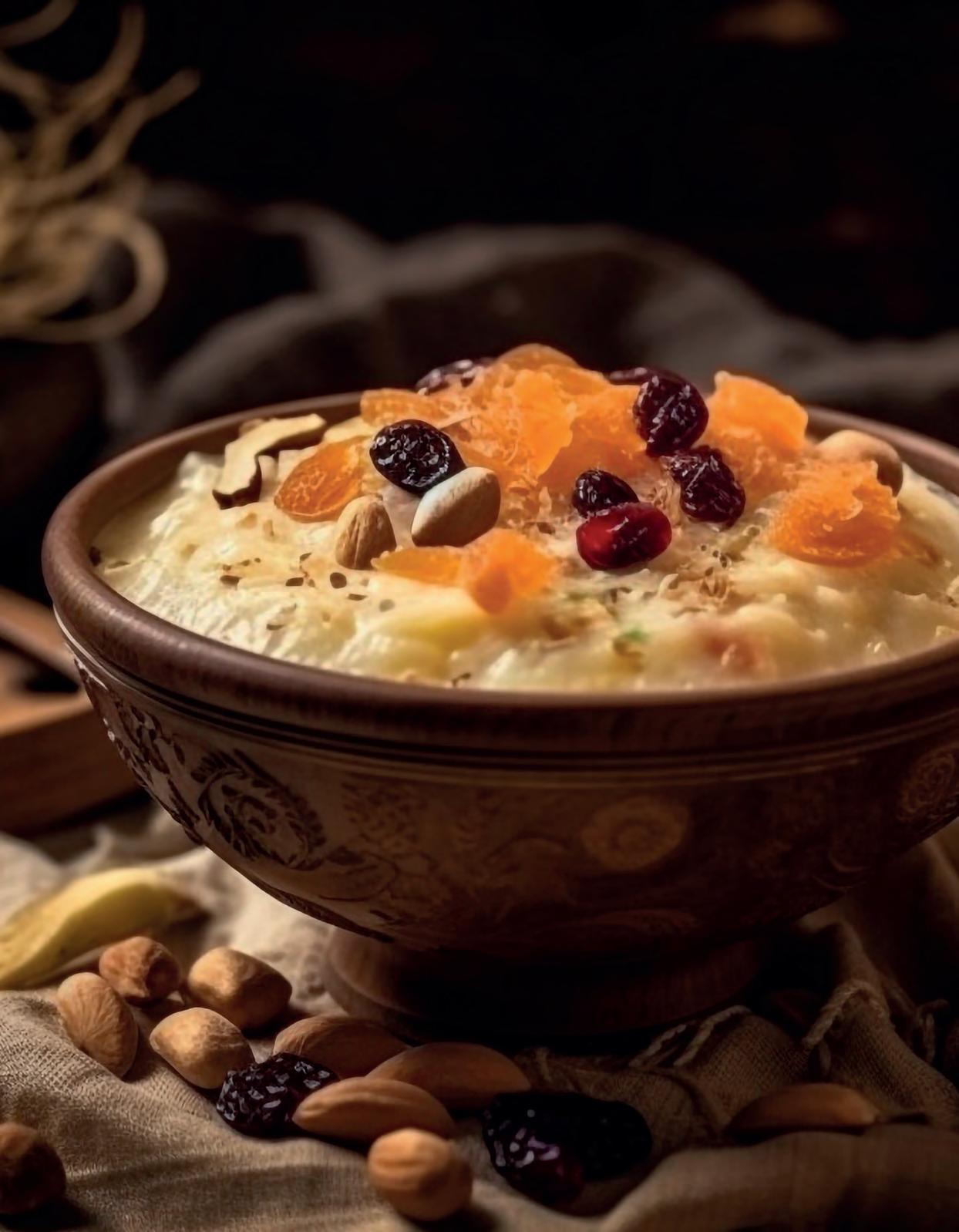
Ingredients
• Fox Nuts: 150 gm
• Low fat milk: ½ liter
• Chopped mixed nuts – a handful
• Chopped fruits – one cup
• Honey – two tablespoons
• Cardamom and saffron strands
• Ghee – One tablespoon
Method
• Pan-broil the fox nuts until half crisp
• Add one tablespoon of ghee to the pan and continue roasting the fox nuts.
• Take off the fire, cool and crush to a coarse powder
• In a heavy bottomed vessel, boil the milk, bring it to a boil and simmer until it reduces a little
• Stir in the honey, chopped nuts, cardamom and saffron strands and simmer some more
• Add the fox-nuts and stir in well and simmer
• Very soon the milk will gain a thick consistency like a pudding and take it off the fire
• Pour it in bowls, garnish with some nuts, chill and serve
Note: Foxnuts are nutrient-dense and low in glycemic index and can be enjoyed. They are also low in fat and rich in dense carbohydrates, fiber, magnesium, potassium, phosphorus, iron and zinc.
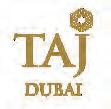

Where culinary storytelling meets timeless Indian elegance
Nestled in the heart of Business Bay, on the fourth floor of the Taj Dubai, The Sunday Bombay Brasserie exudes an extravagant charm. With an open kitchen, elegant ambience, accentuated by vibrant interiors that feature dramatic murals, ambient lighting, complimented with soulful music and culinary masterstrokes, it is sure to leave a lasting impression in your mind.
Our chosen table offered a breathtaking night view of the Burj Khalifa, paired with a front-row seat to the restaurant’s live entertainment—as a sitar player performed beautifully curated renditions from Indian cinema. The scene effortlessly set the mood for an enchanting evening.
Starters that stir the senses
Chef Pranav and his team presented a selection of meticulously chosen dishes. The mood was set with Mango Sphere and Chilli Caviar—a playful nod to nostalgic Indian summer flavors. The bite-sized surprise was an innovative and engaging start to the meal.
Next came the White Tomato Shorba, a dish that felt like a warm, comforting hug. An immaculate dish created with the extraction of the essence of tomatoes without their color and adding a subtle

smoky touch from the tandoor, it was evident that this soup was crafted with care and creativity.
This was followed by four tandoor-based starters, each distinct in flavor. The Basil Chicken Tikka proved to be an acquired taste, while the Tandoori Sea Bass and Bhatti Prawns were both cooked to perfection— juicy, flavorful, and delicately spiced. But the standout was undoubtedly the Lamb Chops— succulent, spice-rich, and slow-cooked over four hours for that meltin-your-mouth texture. It was, quite simply, a masterpiece.
non-vegetarian dishes, served alongside a breadbasket and steamed rice.
The Lal Moth ki Dal, reminiscent of dal makhani, brought home-style comfort, while the Butter Chicken—made with imported pomodoro tomatoes from Italy— offered a creamy, indulgent classic done right.
The surprises continued with Lasooni Palak and Edamame, a health-forward twist on North Indian saag, combining bold garliclaced spinach with crunchy edamame and chestnuts. The Teen Mirch ka Prawn Tikka Masala was a perfect harmony of spicy heat and prawn sweetness.
But the true hero of the table? The Dum ka Gosht—a slow-cooked lamb dish where the spices and meat fused into a luxurious, rich gravy. It was, without doubt, a masterfully executed plate worthy of applause.
No Indian meal is complete without dessert, and we were treated to three of their best-selling finales: Gulab Jamun, Matka Phirni, and Khajoor Anjeer Halwa. While the first two were deliciously classic, it was Halwa that stole the show. Sugar-free and naturally sweetened with dates and figs, it was a guilt-free indulgence—especially delightful for those with dietary restrictions.

A Beetroot Pachadi—a Kerala-inspired dish was served with twist to the traditional preparation, for cleansing the palate. Here, yogurt is replaced by creamy labneh, adding richness and tang to the traditional recipe. Two house-crafted mocktails served with the food served as perfect accompaniments to the unique dishes. These were Bansuri, a tangy blend of watermelon, mint, and strawberry, and Ranjha, a sweet concoction of guava and rose syrup. Both were vibrant, refreshing, and thoughtfully presented.
The main course featured a wellbalanced mix of vegetarian and
Beyond its à la carte offerings, The Bombay Brasserie curates vibrant culinary experiences. The restaurant hosts a daily Thali lunch with a rotating weekly set menu and the Sunday Matinee Brunch—a lively affair featuring live music by Shahid Shabaz, a chaat counter, and a sharing-style menu from 1 PM to 4 PM. Prices start at AED 250.
With soul-nourishing food, a refined atmosphere, and warm hospitality, The Bombay Brasserie isn’t just a place to eat— it’s an immersive journey through Indian cuisine. We left with full hearts and fuller stomachs.
For reservations, contact: +971 4 438 3222

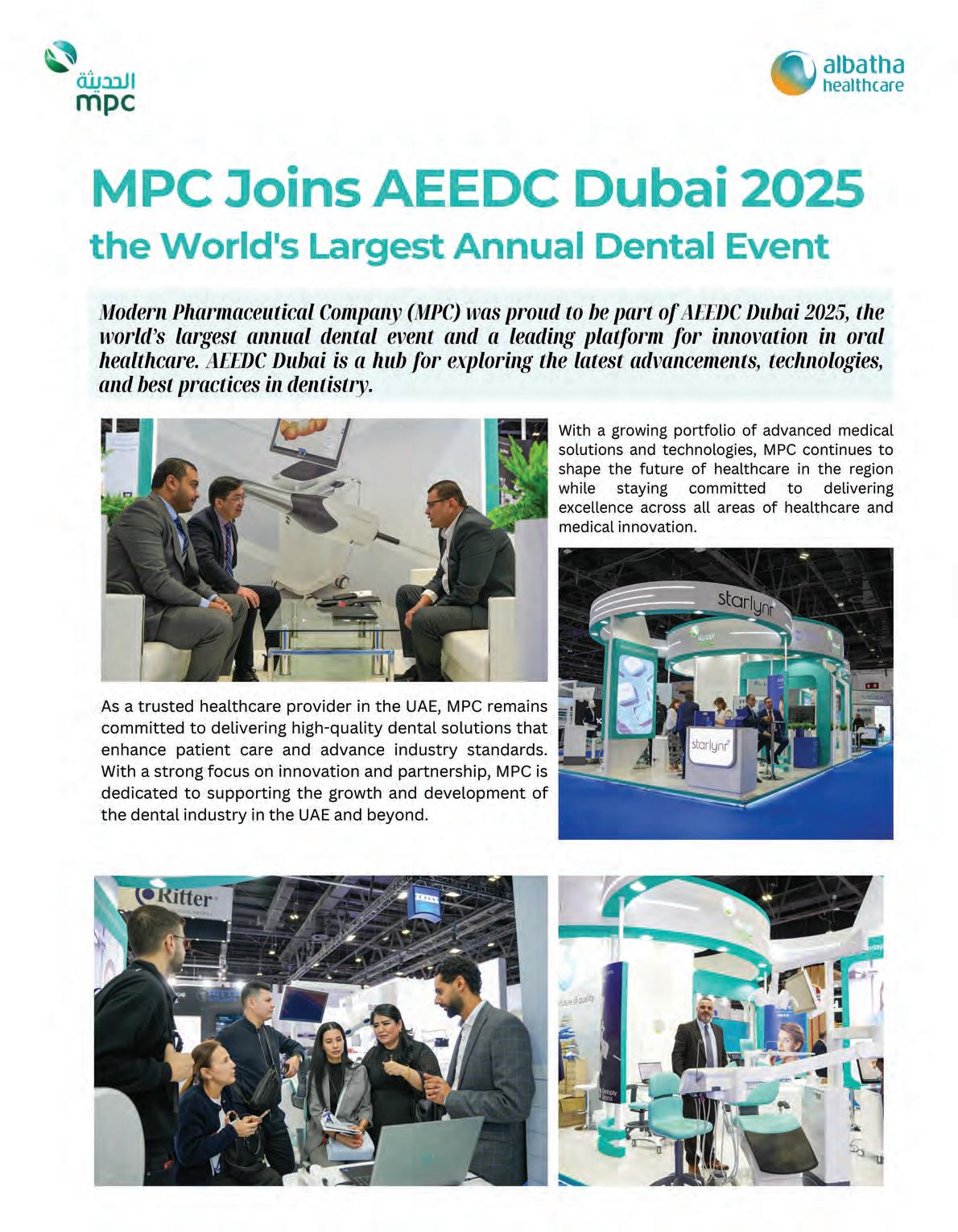
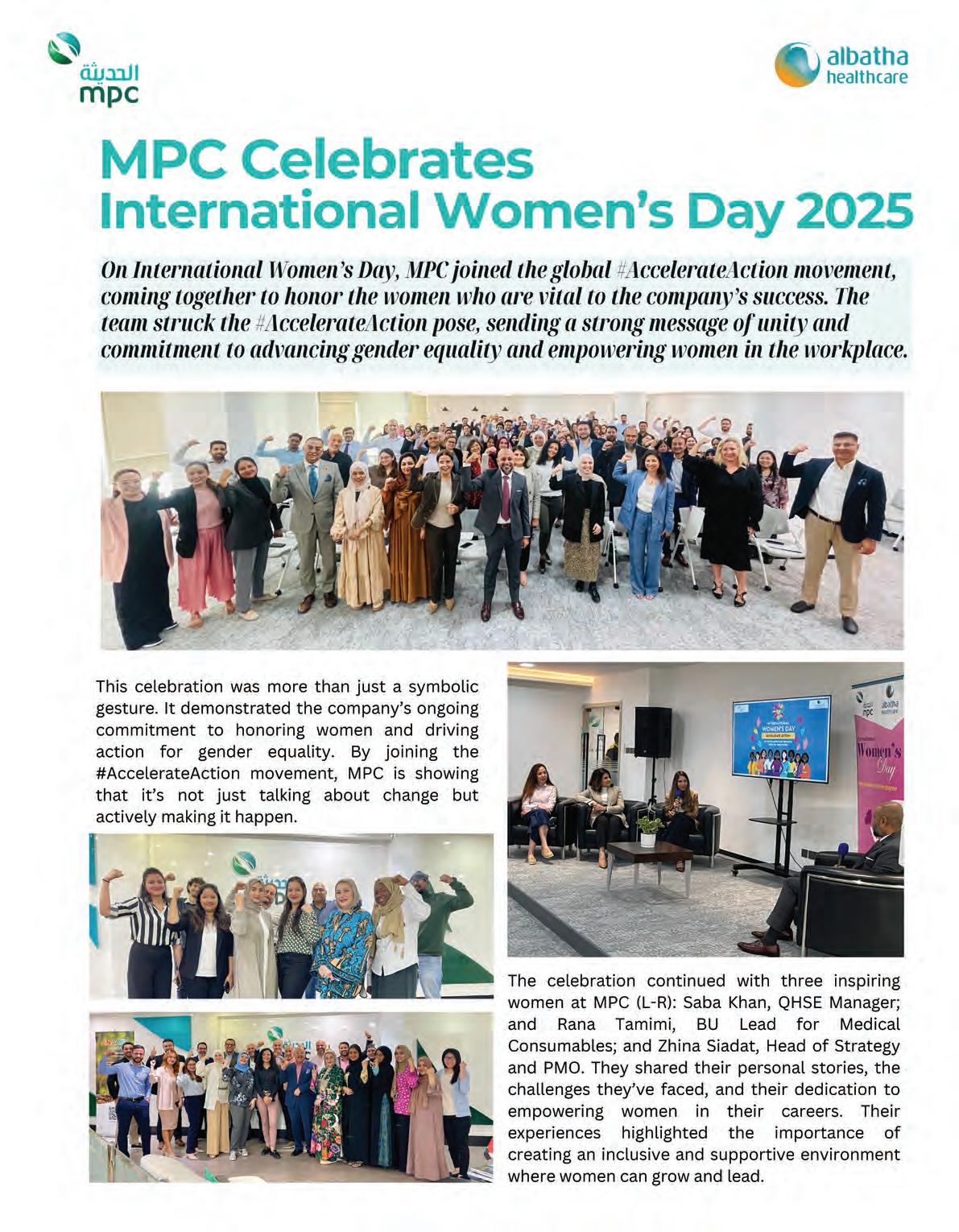
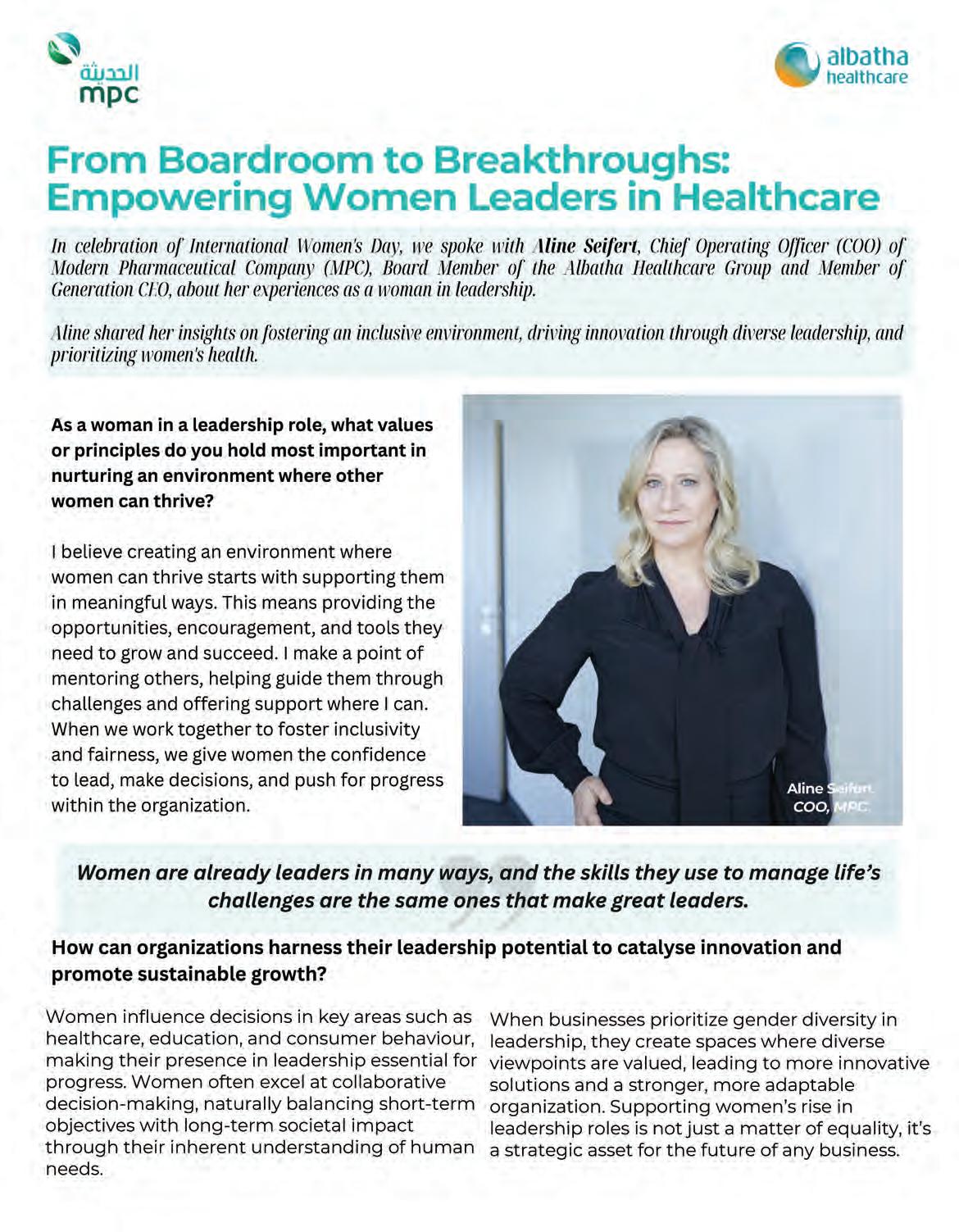

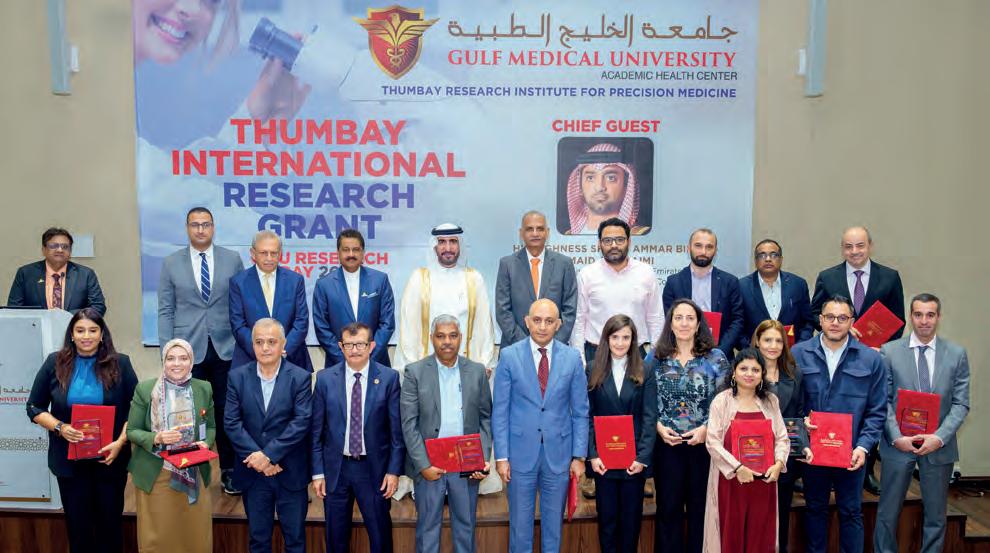
Thumbay International Research Grant 1st Cycle Concludes with Resounding Success: 192 Applications from 34 Universities, 14 Projects Awarded at Grand Ceremony in Ajman
Chitkara University awarded an honorary PhD to Dr. Thumbay Moideen for his outstanding work in healthcare, education, and business, and for his strong impact on social change and innovation
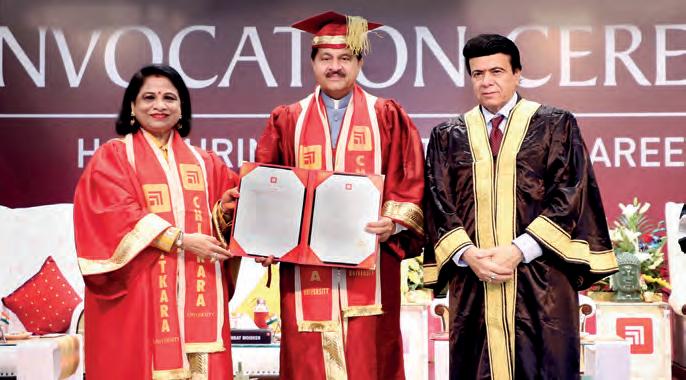

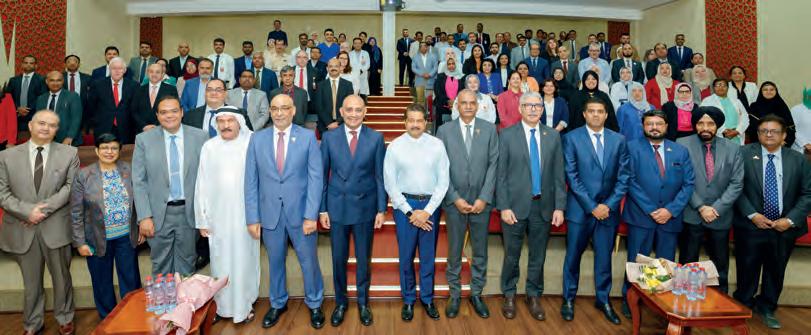
The ceremony marking the appointment of Dr. Manda Venkatramana as Acting Chancellor of Gulf Medical University, held in the esteemed presence of Dr. Thumbay Moideen.

Women’s reproductive health was in spotlight at the first AFOG- SAFOG summit recently held in Dubai . Dr Amala Nazareth
Hon Secretary General- African Federation of Obstetricians and Gynecologists Organizing Secretary- AFOG - SAFOG addressing the delegates .
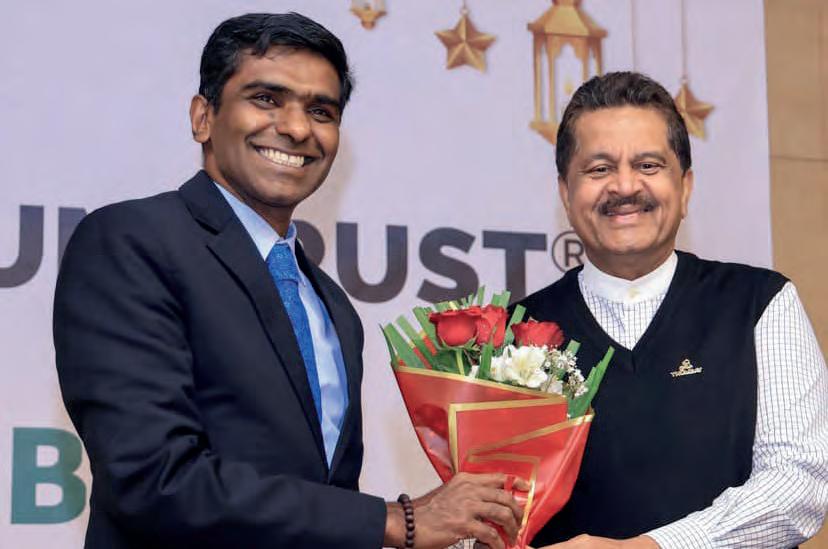

In a global first medical feat, the MGM Healthcare Institute’s MultiVisceral and Abdominal Transplant Team has successfully accomplished the world’s first landmark multi-visceral organ transplant in a 32-year-old patient. Led by Dr Anil Vaidya Chair and Director the patient received stomach, pancreatic-duodenal complex, small intestine- all with key surgical innovations.
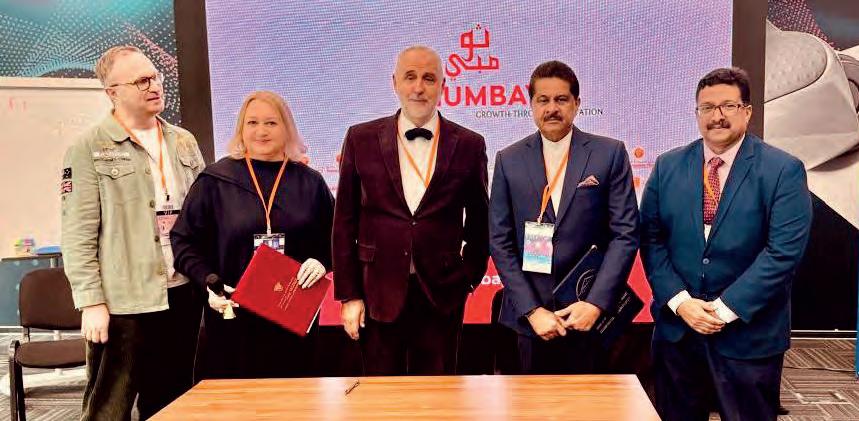

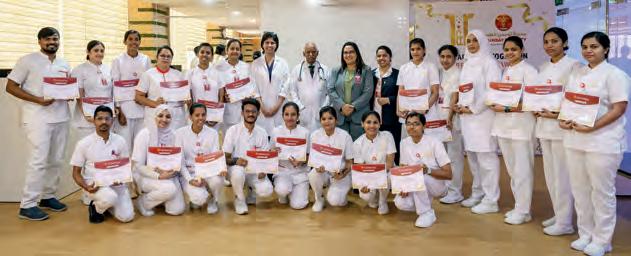
Certificate Distribution Ceremony for the ER Nursing Course held at Thumbay University Hospital — celebrating the dedication and excellence of our nursing professionals.
Women’s Day celebration at Thumbay Hospital, Fujairah — honoring and celebrating the strength, dedication, and spirit of our incredible women workforce.
Dr. Thumbay Moideen participated as a distinguished speaker at MMBK 2025 in Moscow, representing Thumbay Group, and signed an MoU with Don State Technical University in the field of Veterinary Medicine.
His Excellency Dr Fatima Al Kaabi, Director Genera of Emirates Drug Establishment (EDE) giving her keynote at the three-day conference of World Local Production Forum (WLPF) held in Abu Dhabi under the aegis of the Ministry of Health and Prevention from April 7-9.

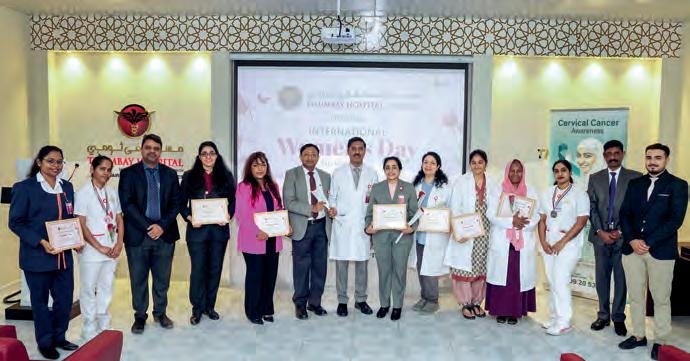
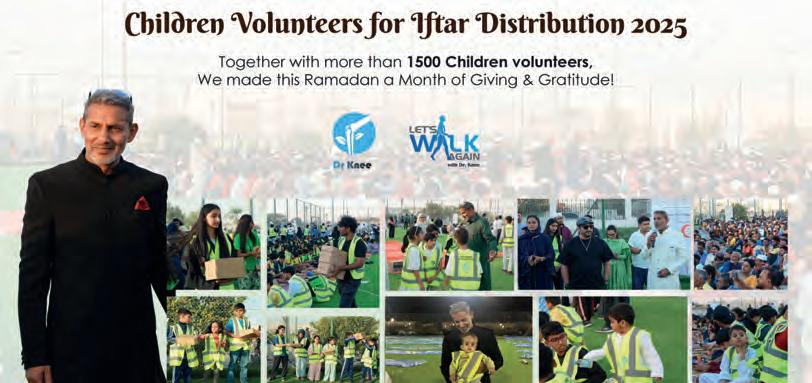
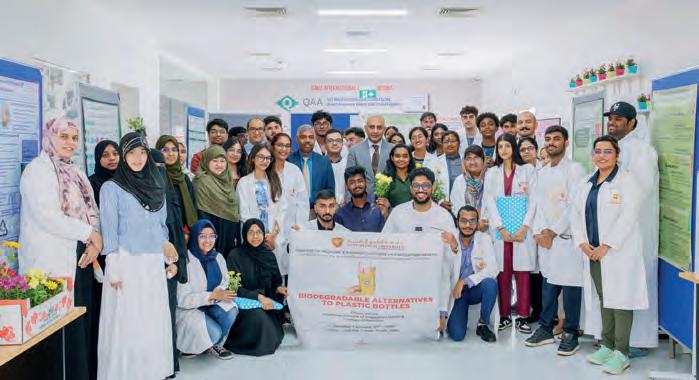
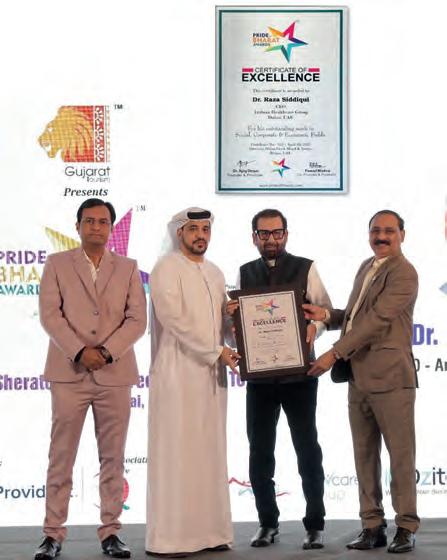
Thousands of Children
Volunteers from various schools successfully participated in distribution of Iftar packets to over 3000 blue collar workers at Saja labour park all through the Holy month of Ramadan under the initiative led by Dr Azam Badar Khan (Dr Knee), founder of the Let’s Walk Again Initiative.
Gulf Medical University students conducted a community engagement activity on biodegradable alternatives to plastic bottles at Thumbay University Hospital — promoting sustainability and environmental awareness.
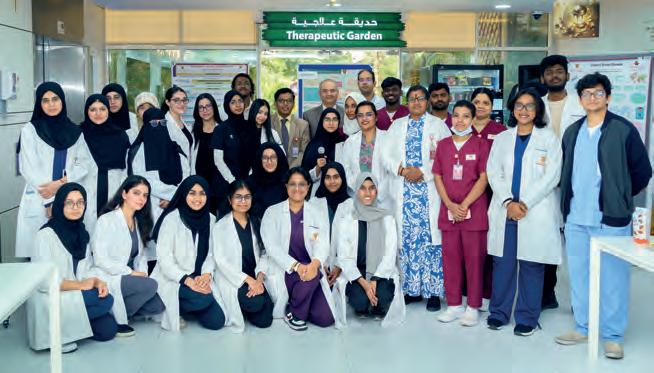
Gulf Medical University students organized a Kidney Day awareness program at Thumbay University Hospital — promoting kidney health
Dr Raza Siddiqui, CEO of Arabian Health Care Group, was awarded the Pride of Bharat Award for his outstanding contributions; receiving the certificate of excellence at ceremony held on April 5.

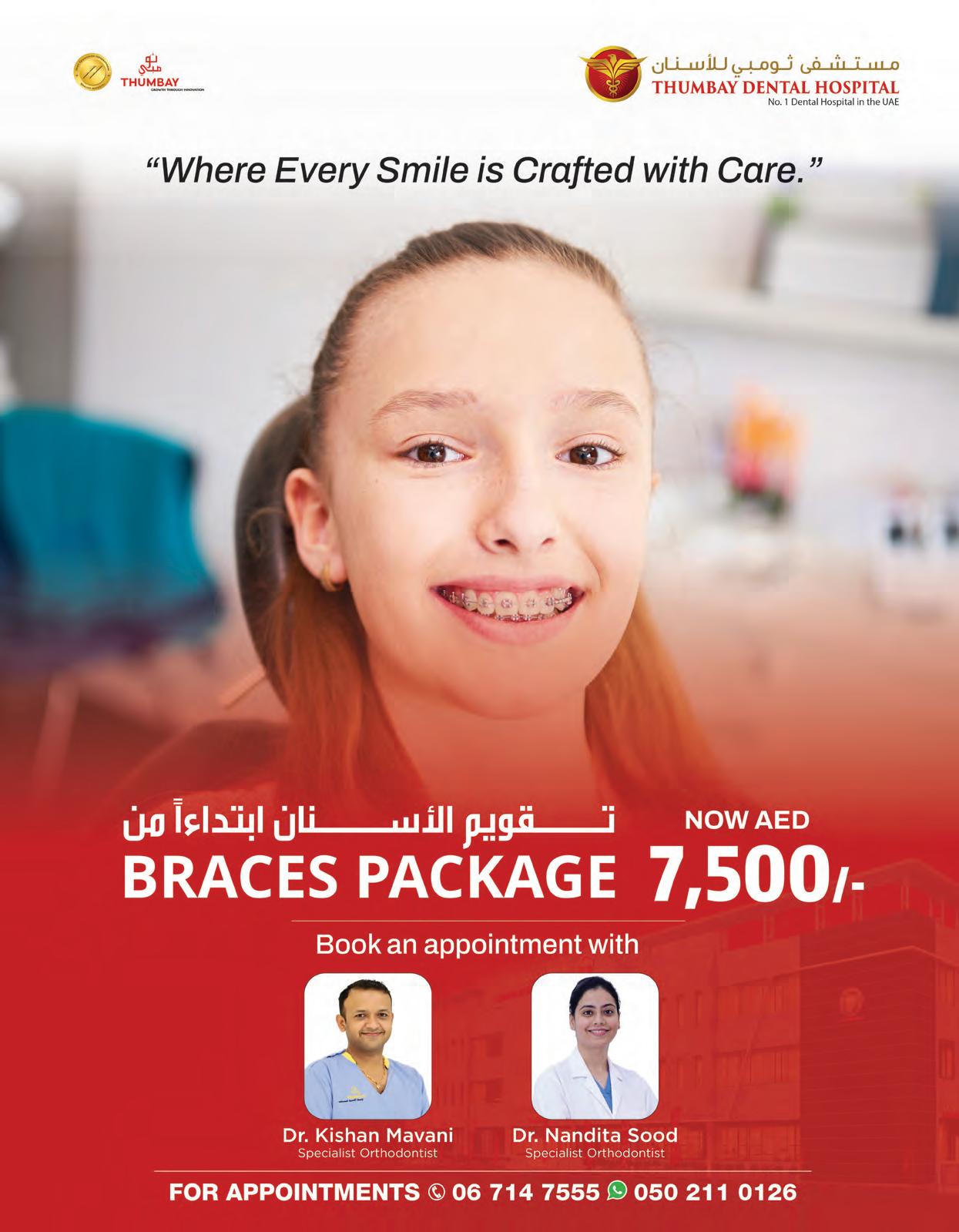



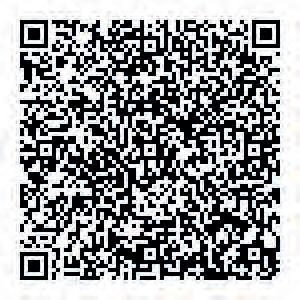


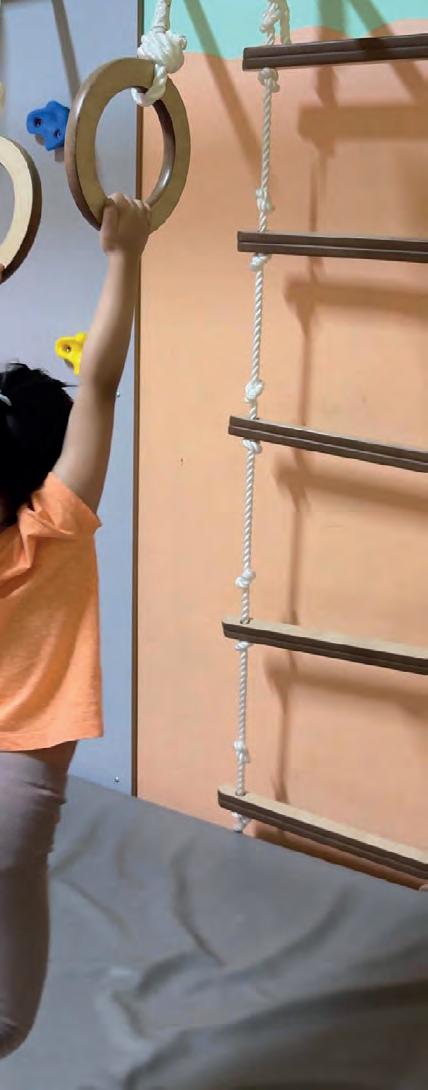



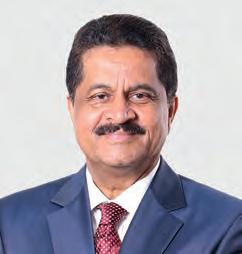

The largest network of Thumbay Academic Hospitals, Clinics, Labs & Pharmacies in the region
| HEALTHCARE |


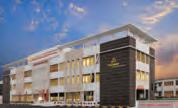
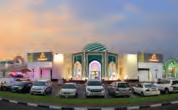
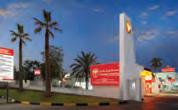
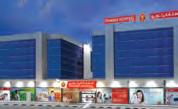


Foundation Programs
• GMU Foundation Program (UK-USA)
• International Foundation Program Upper Austria Diploma Programs
Medicine Programs
• Doctor of Medicine Program (MD) 6 years
• Graduate Entry Doctor of Medicine Program (MD) 4 years
• Diploma of Dental Assistant • Diploma in Pharmacy Technician Bachelor Programs
• Dentistry • Pharmacy • Nursing • Biomedical Sciences • Healthcare Management and Economics
• Anesthesia Technology • Medical Imaging Sciences • Medical Laboratory Sciences • Physiotherapy
• Optometry • Audiology and Speech Language Pathology
Pathway to International Medicine Program (Twinning Program)
• Higher Diploma in Preclinical Sciences (3 Years Study in Gulf Medical University, UAE + 3 Years Study in selected International Universities) Poland - Italy - Malaysia - UK - Americas -
• Public Health (Collaboration with University of Arizona United States) • Physical Therapy
• Endodontics • Periodontics • Clinical Pharmacy • Drug Discovery and Development
• Postgraduate PharmD • Healthcare Management and Economics • Health Professions Education
• Medical Laboratory Sciences • Medical Ultrasound • Neonatal Critical Care Nursing
• Artificial Intelligence and Health Informatics Doctoral Dual PhD Programs
• Precision Medicine (PhD PM) with Université Paris Saclay, France
• Dual PhD in Health Professions Education GMU & Erasmus University Netherlands
+971 6 7431 333 | www.gmu.ac.ae




